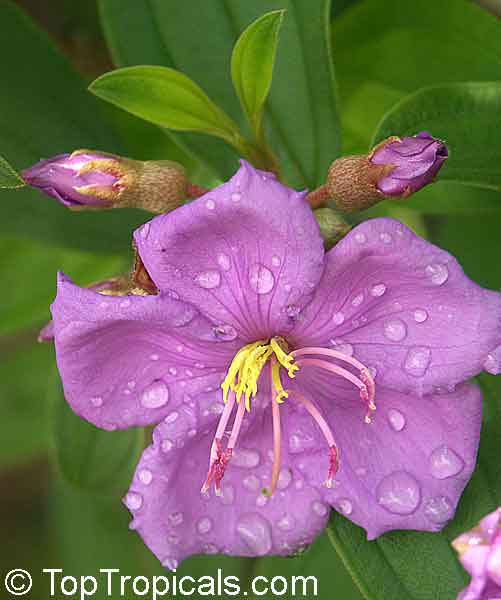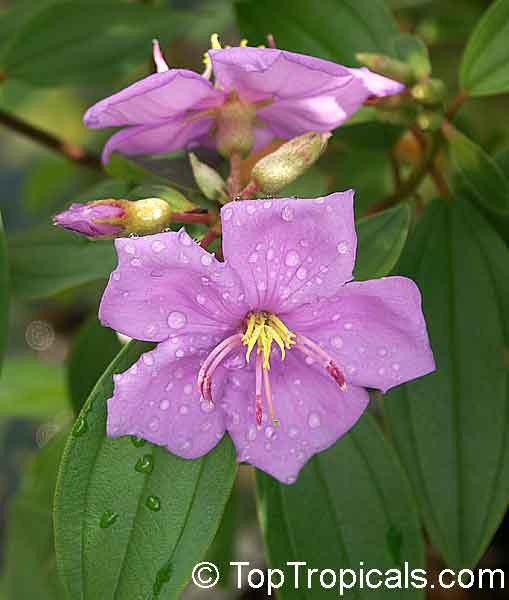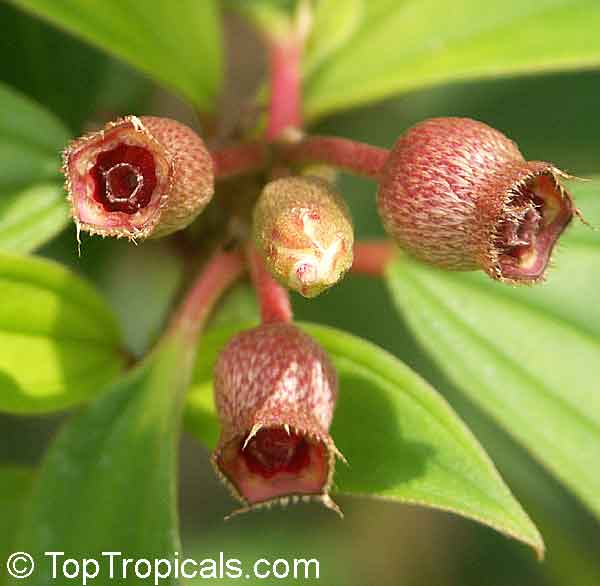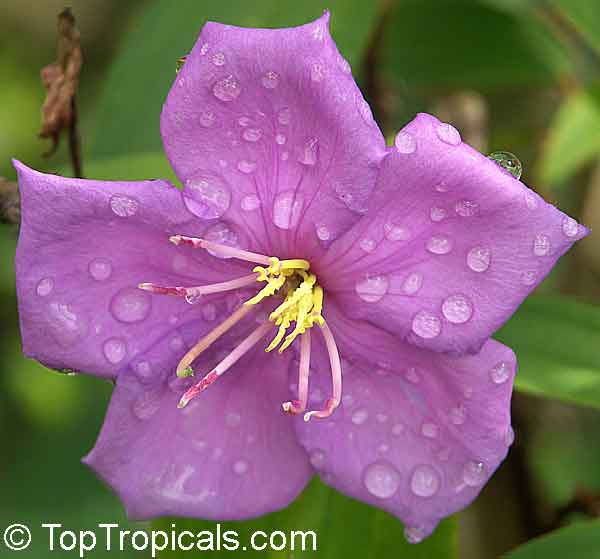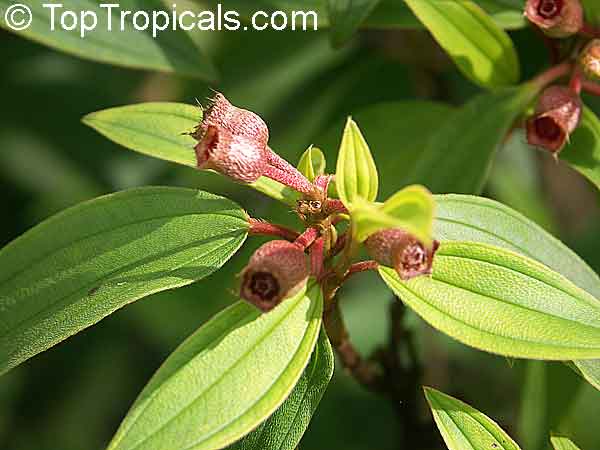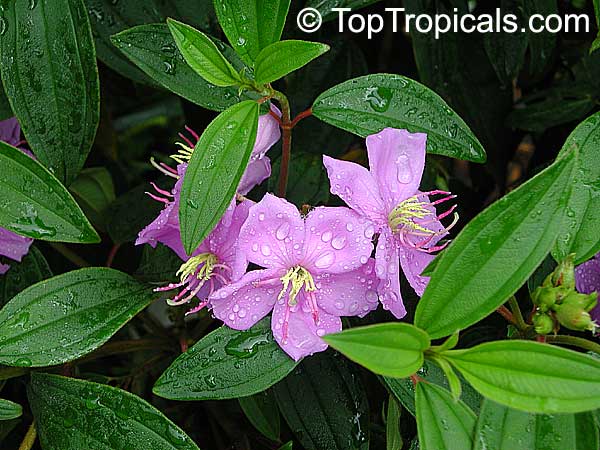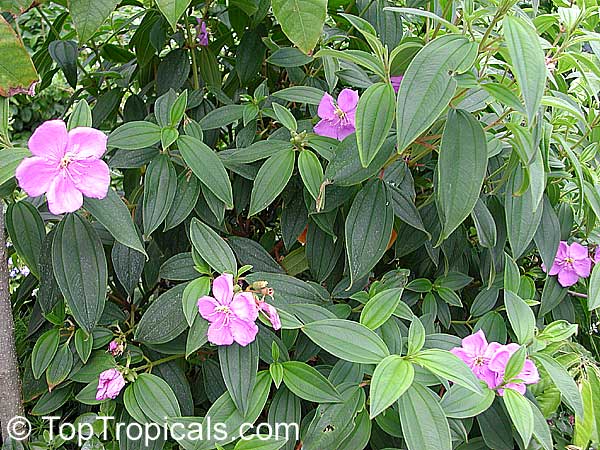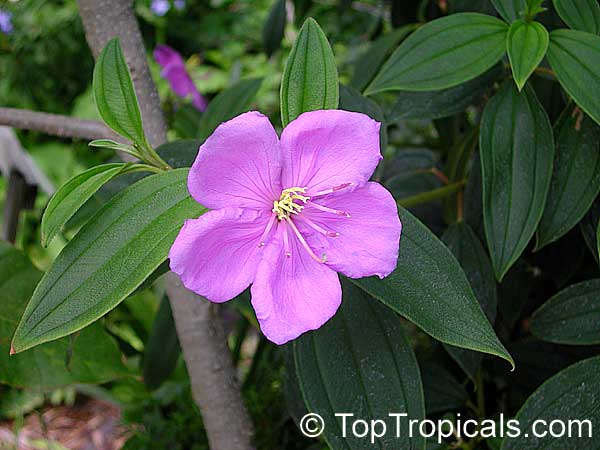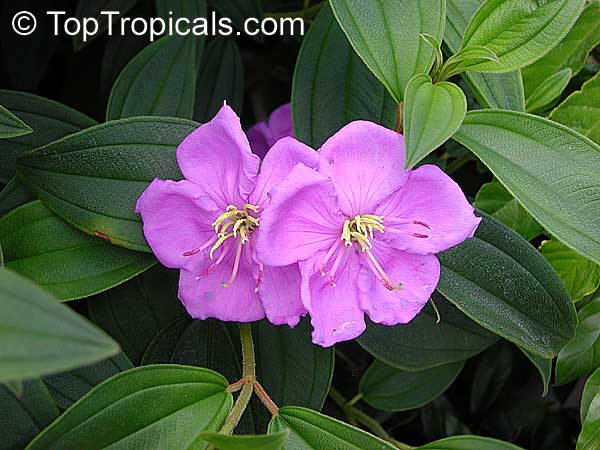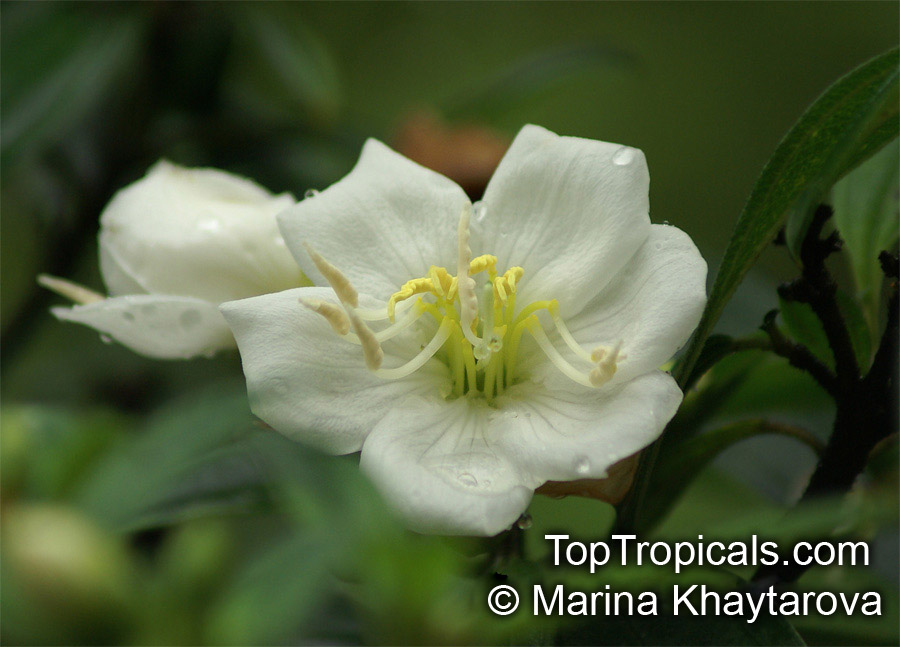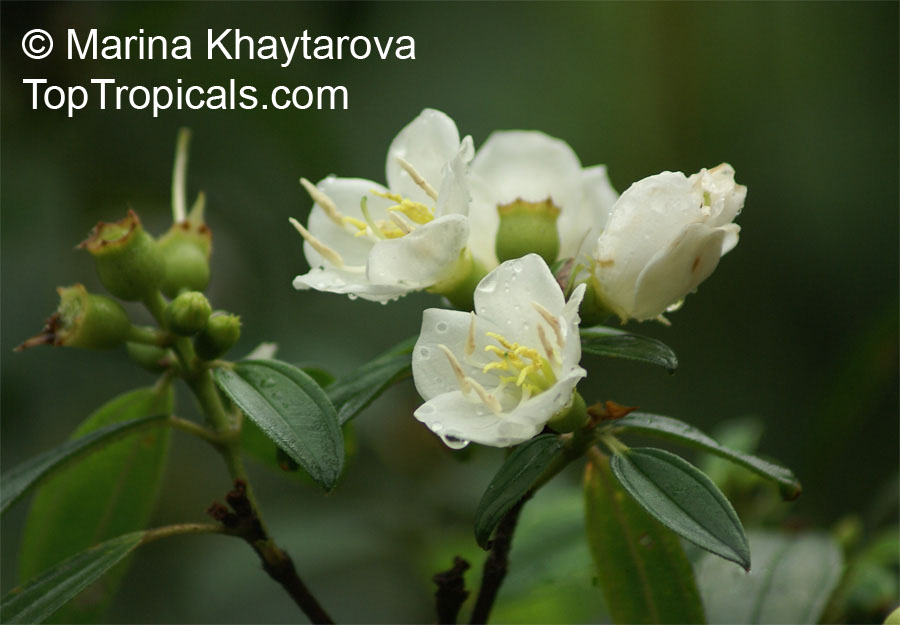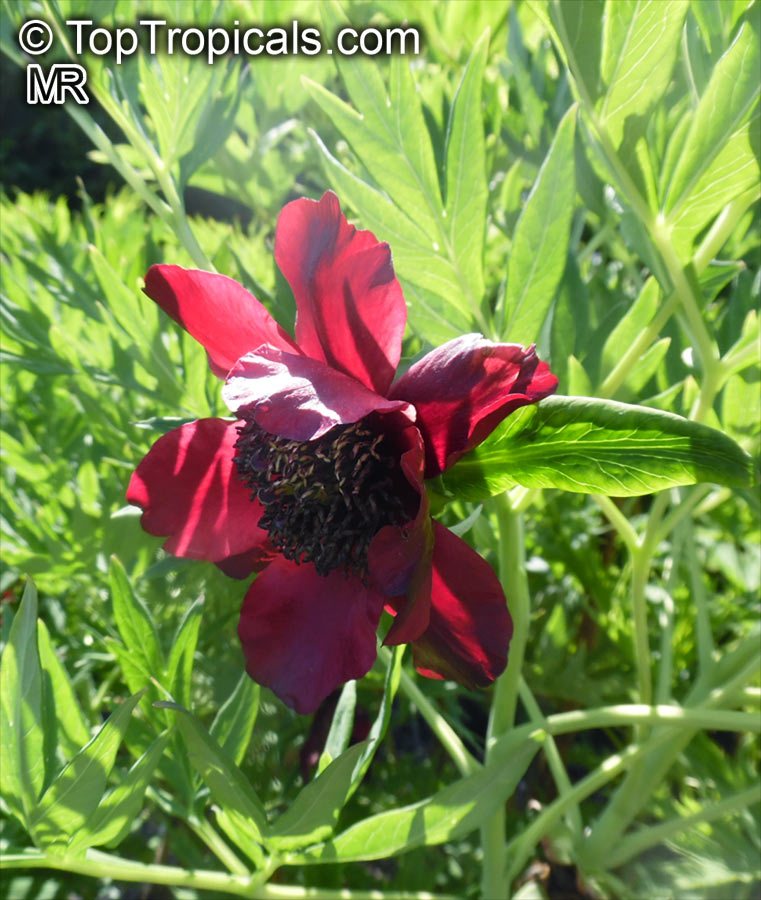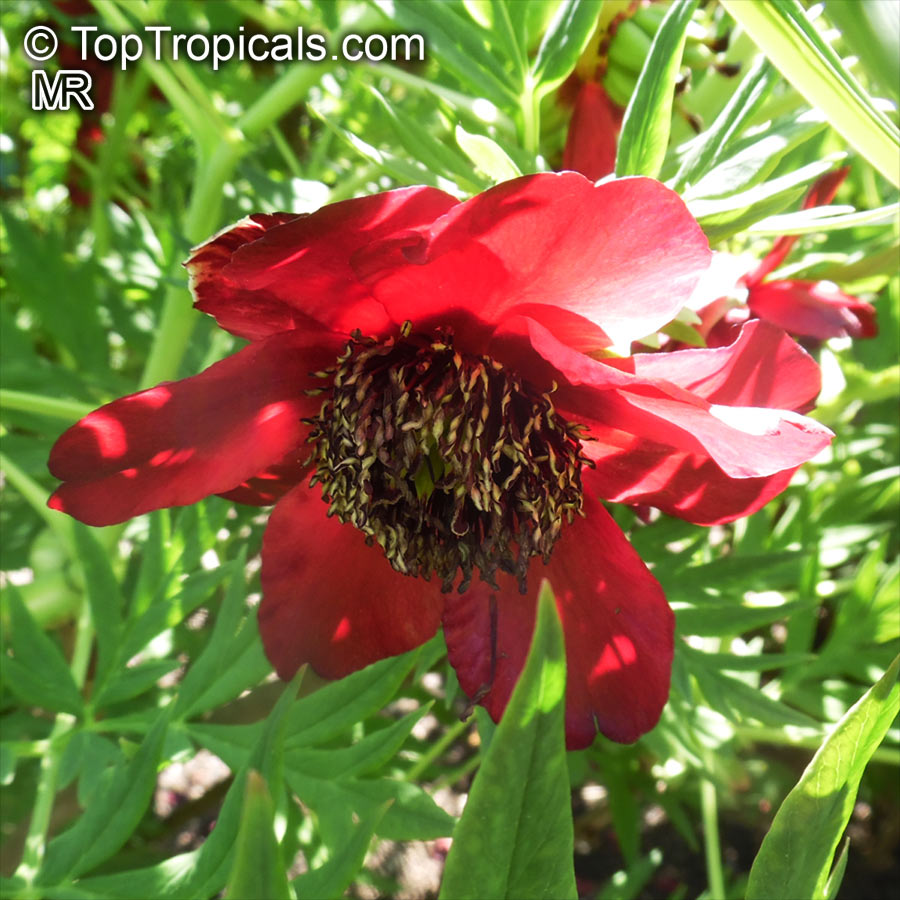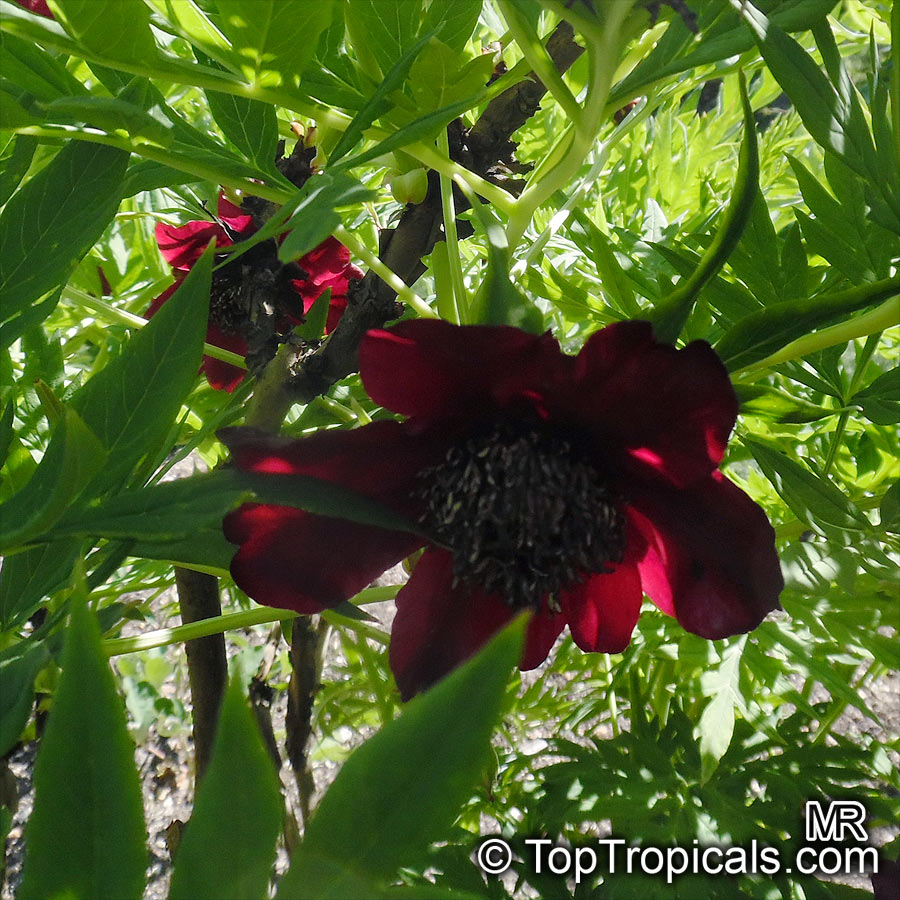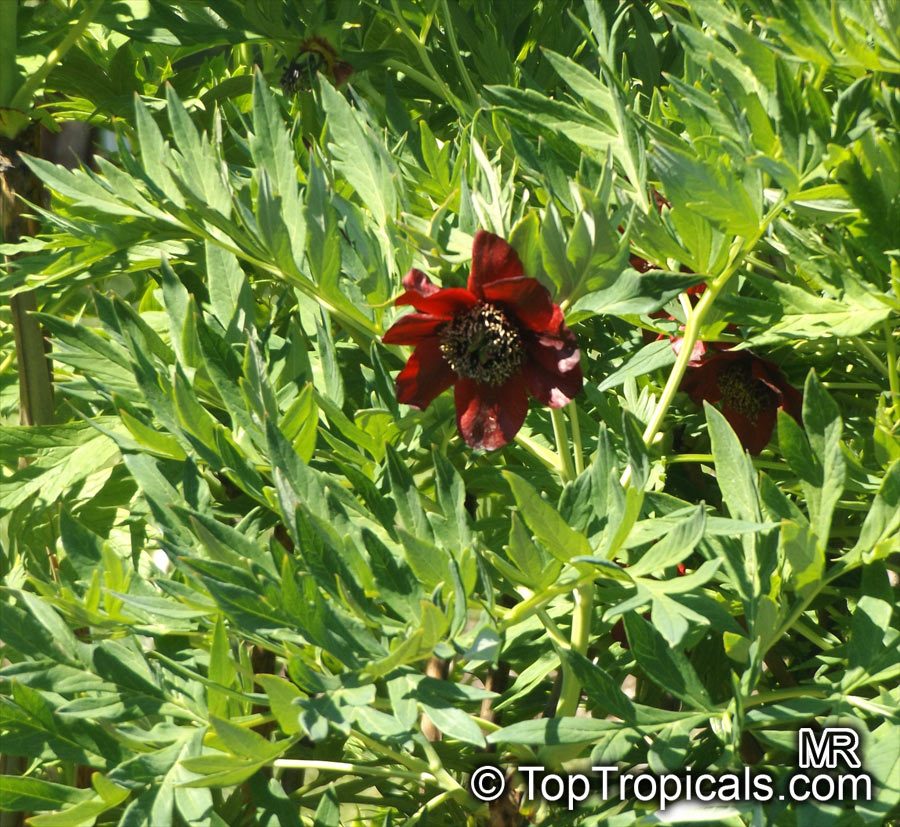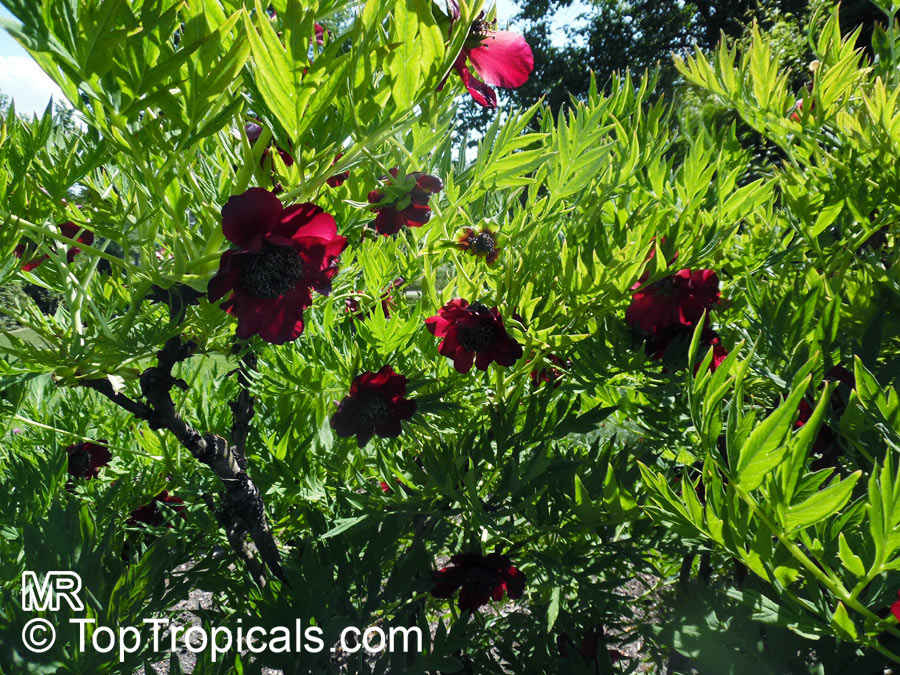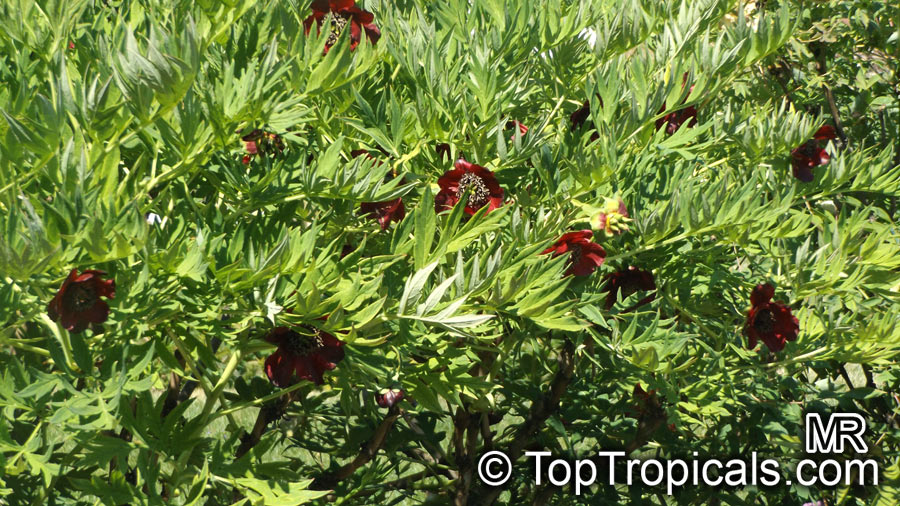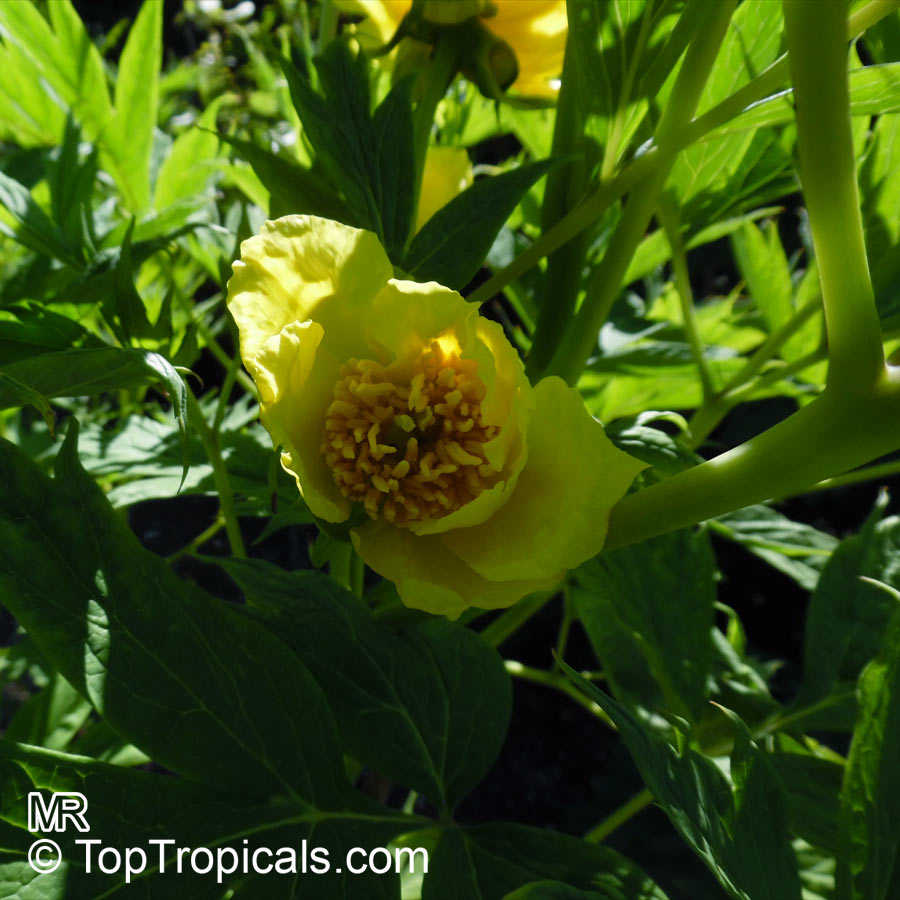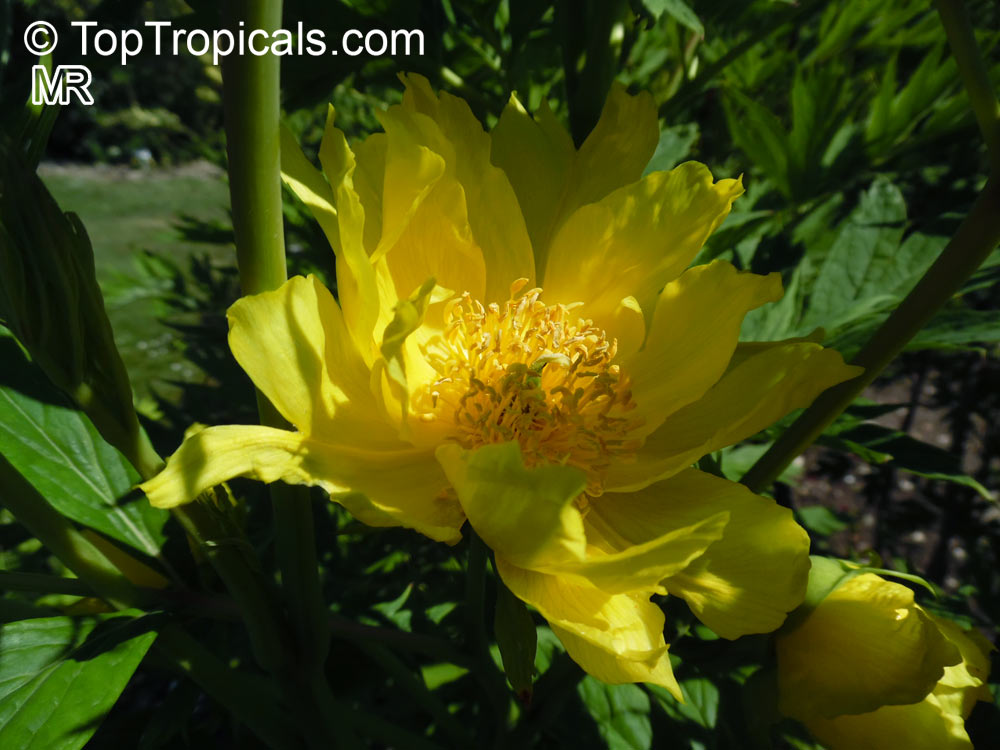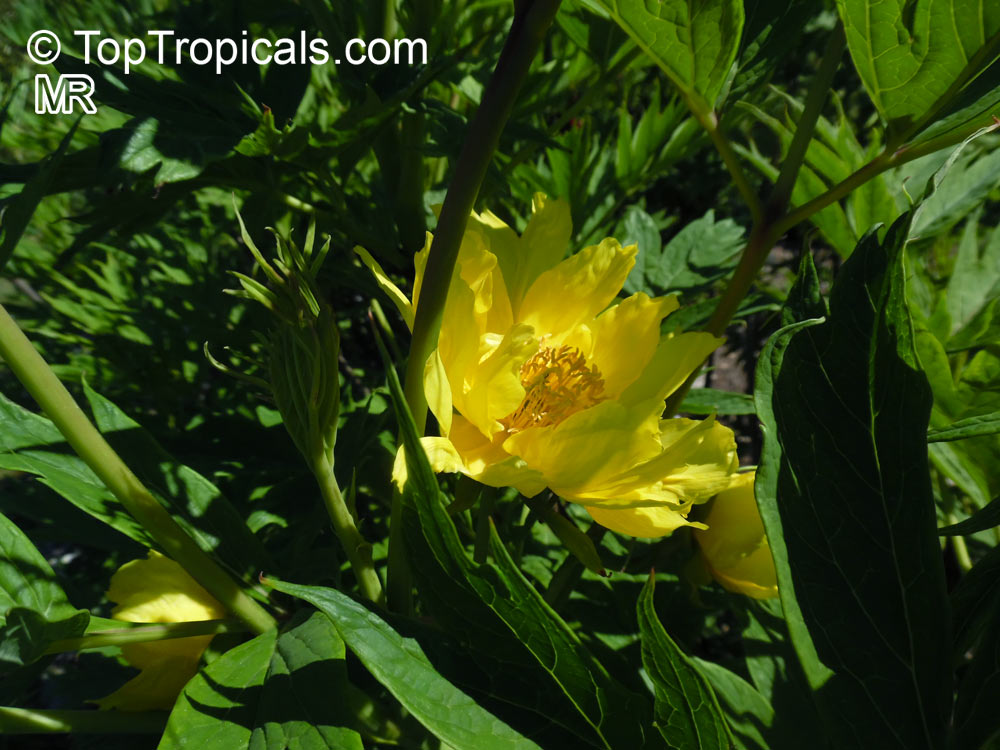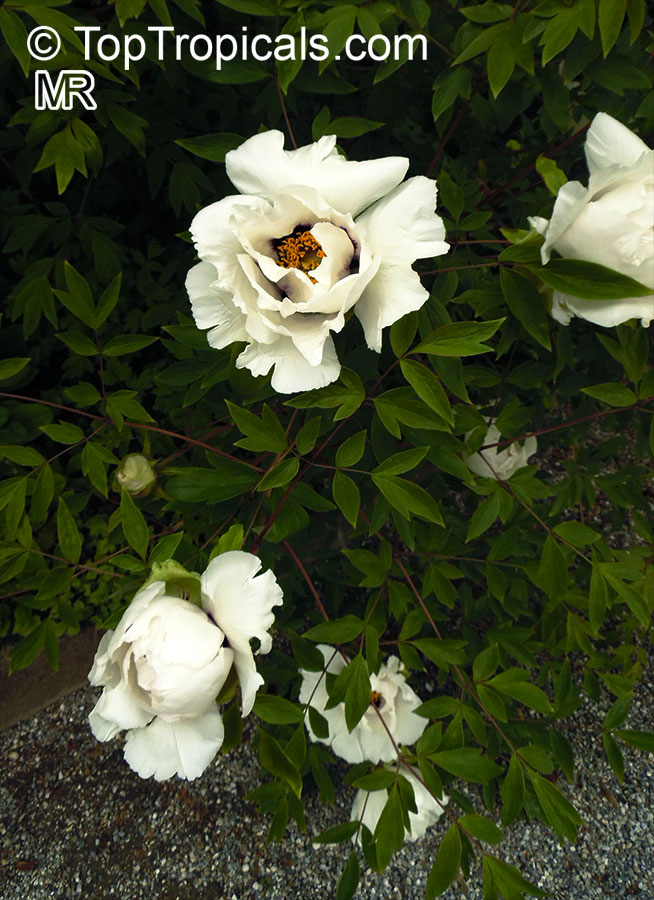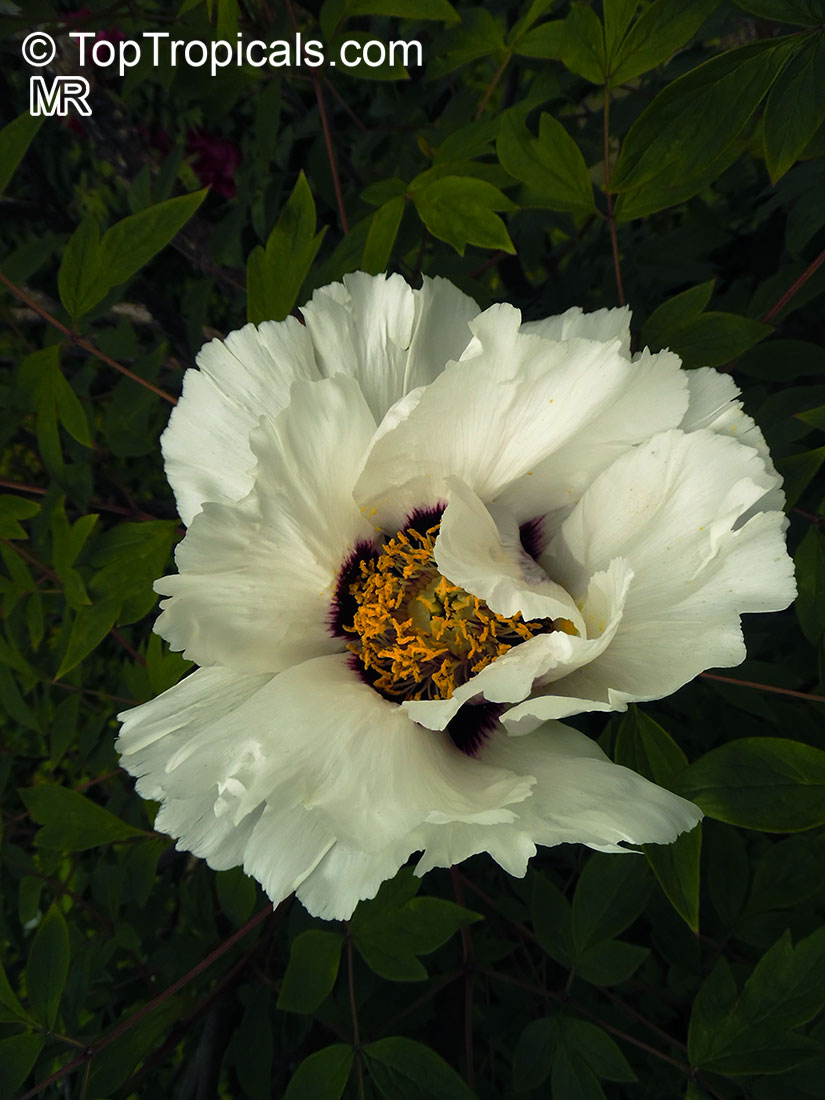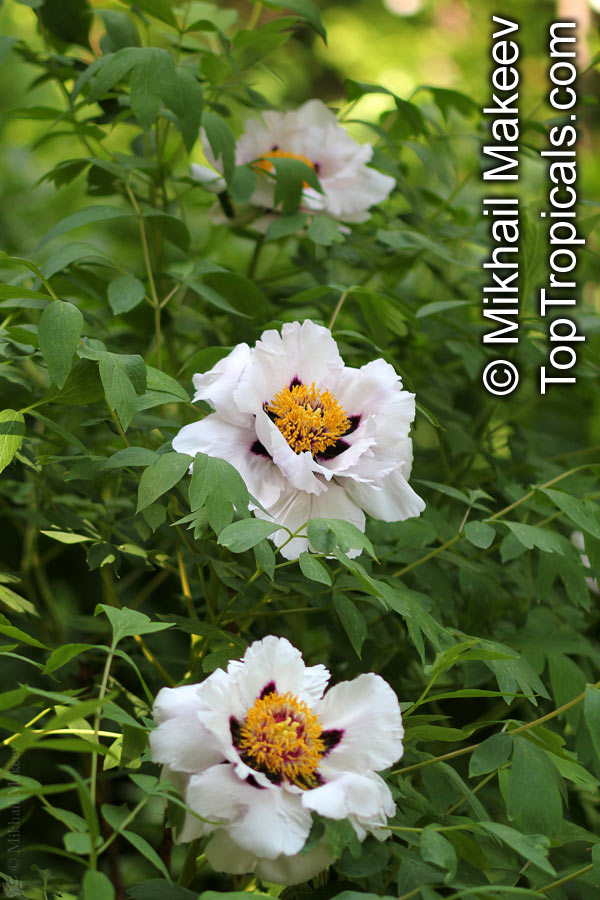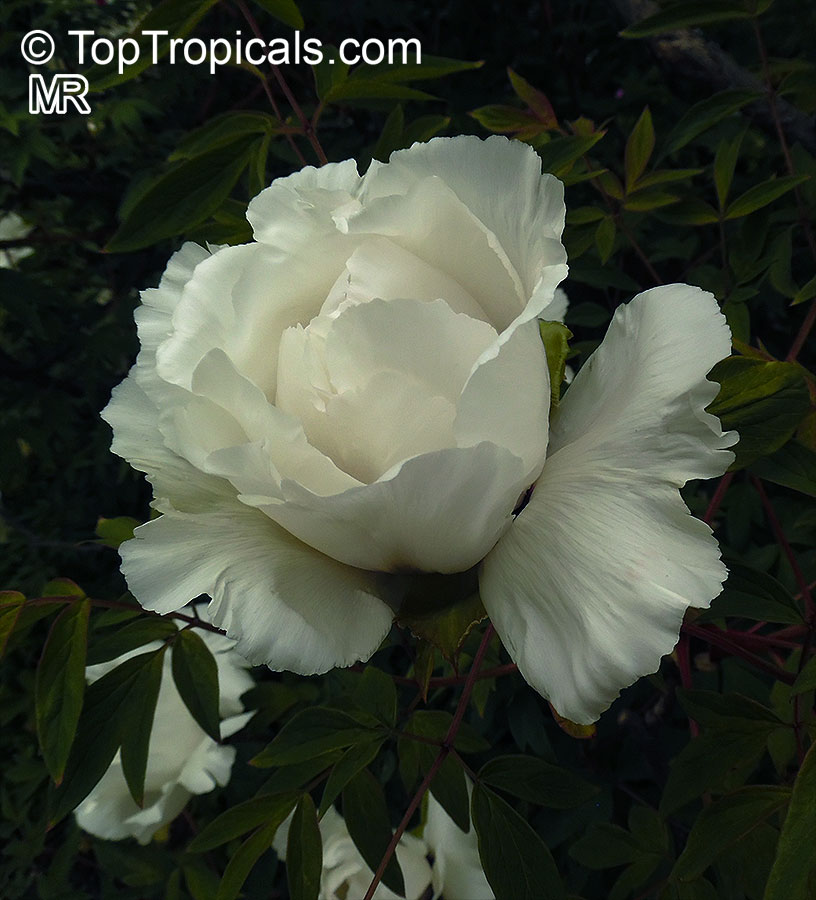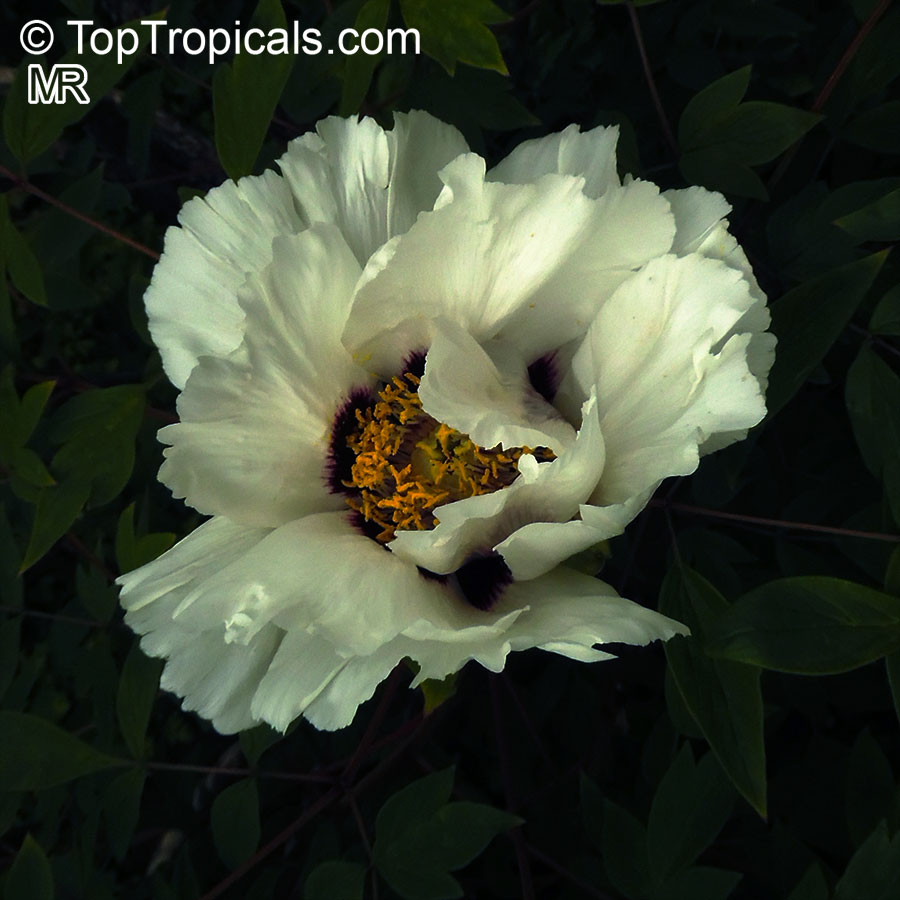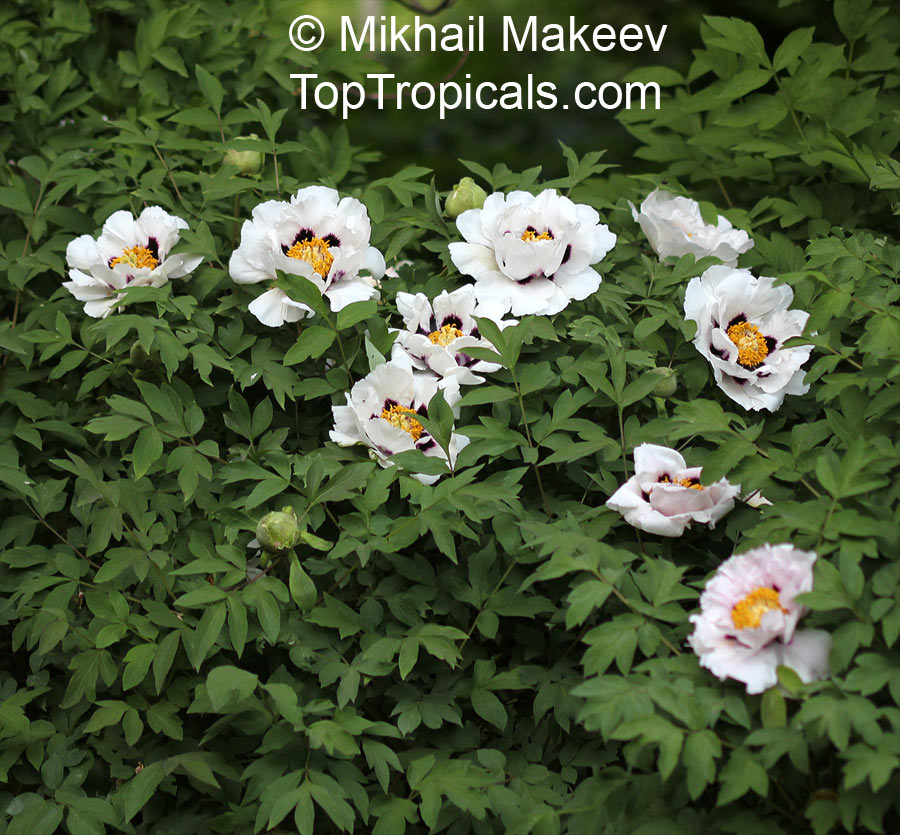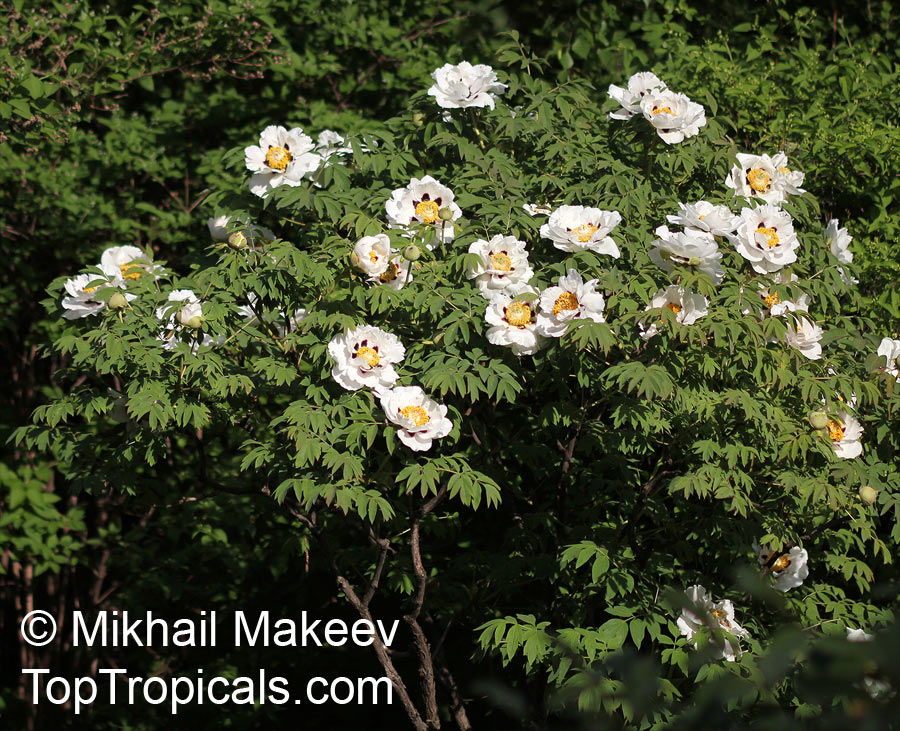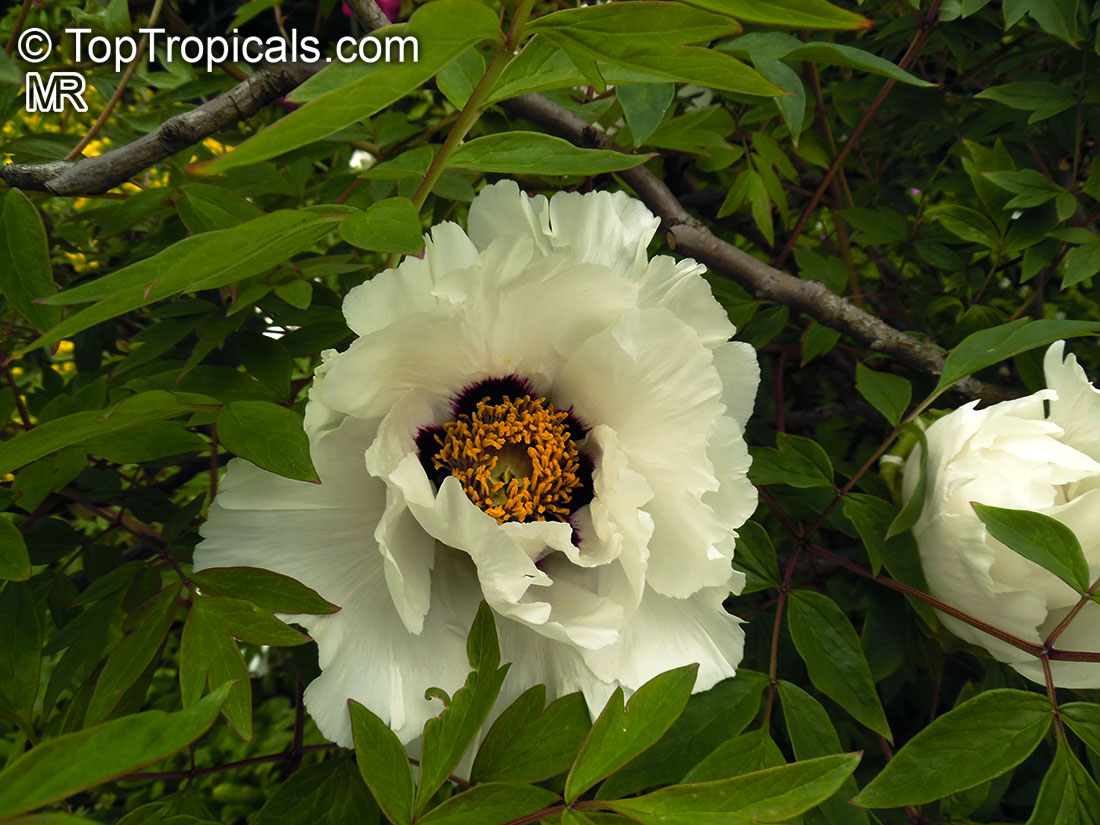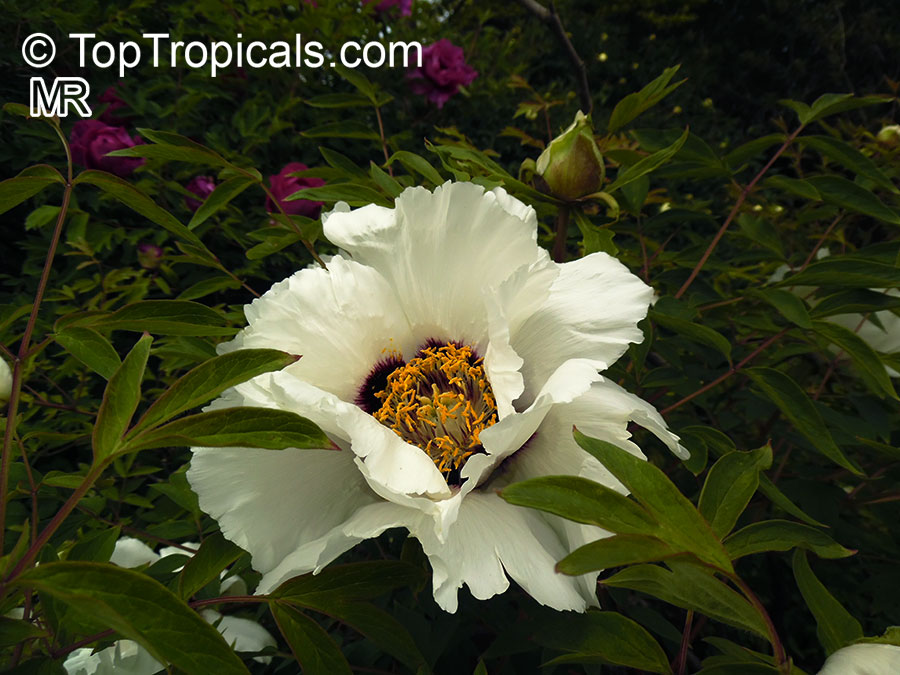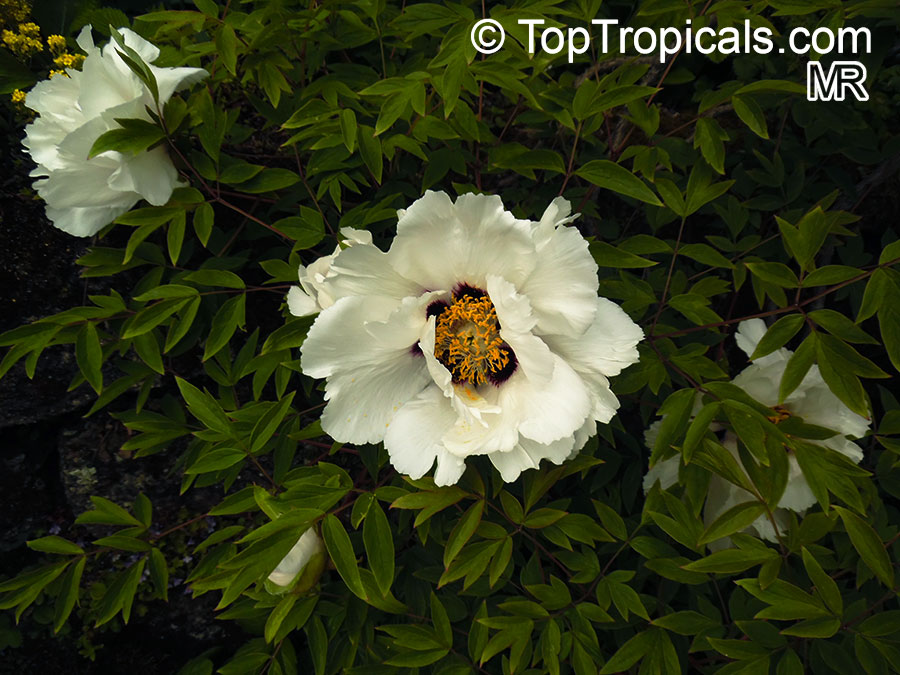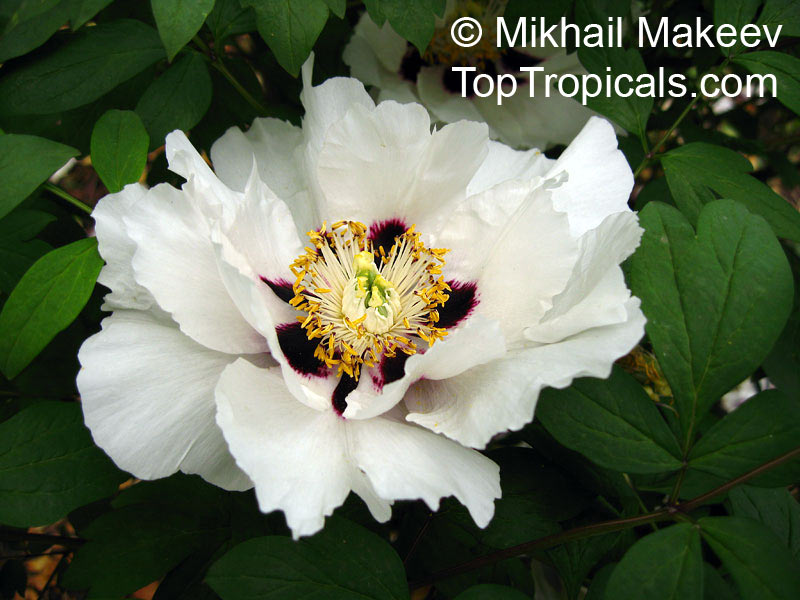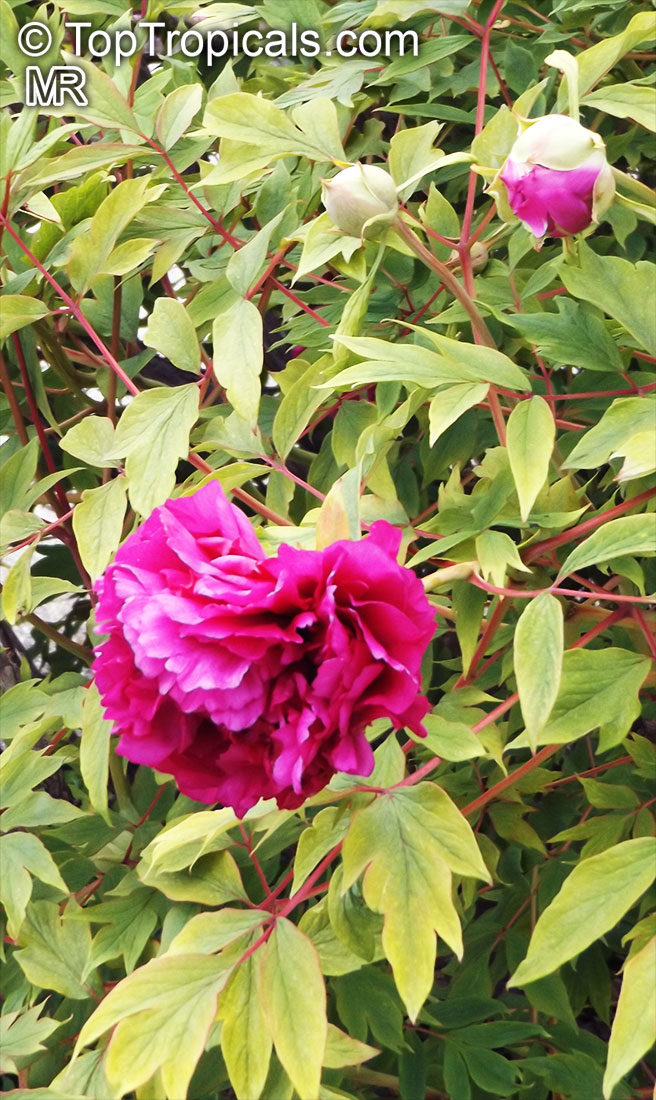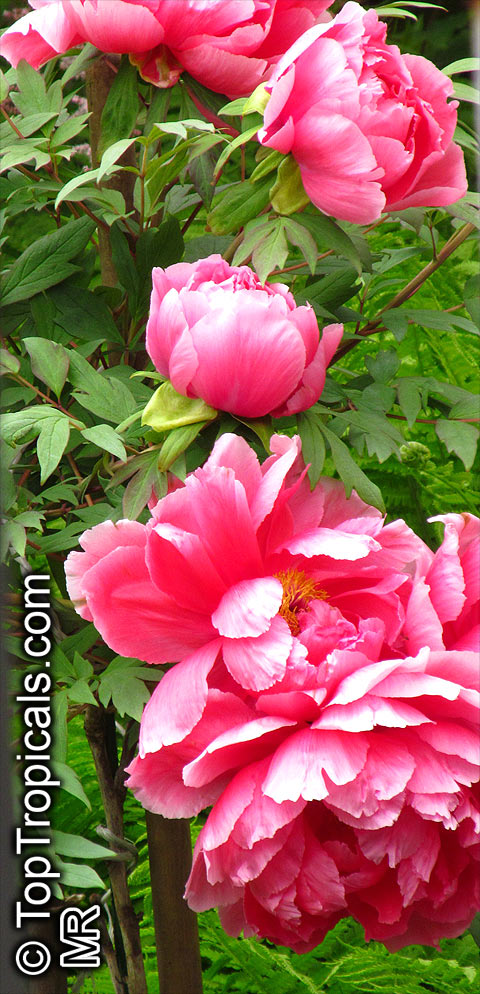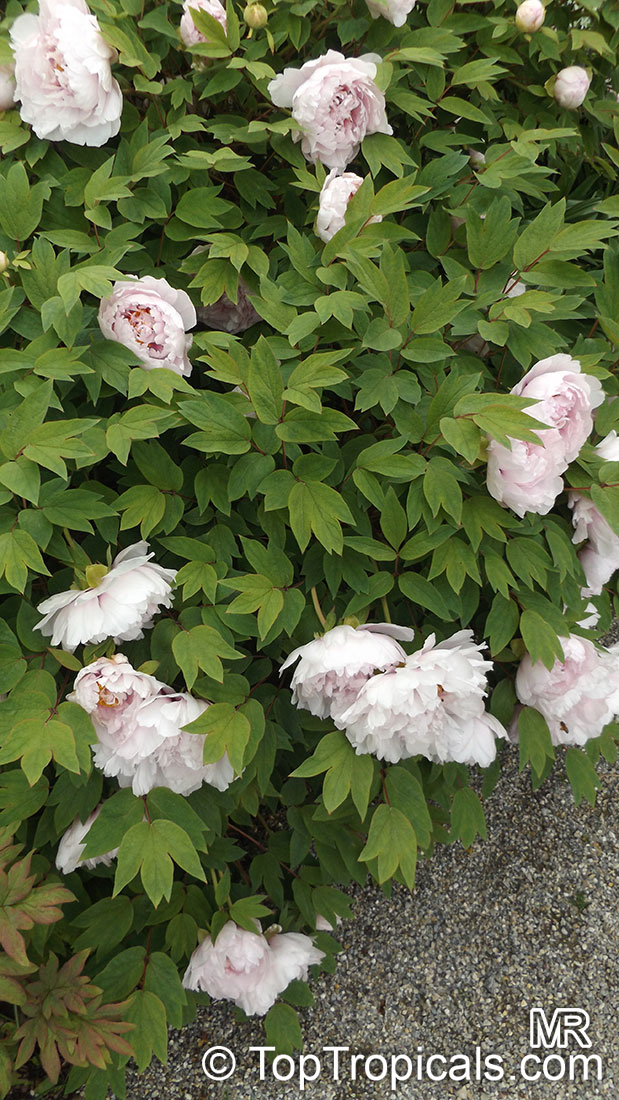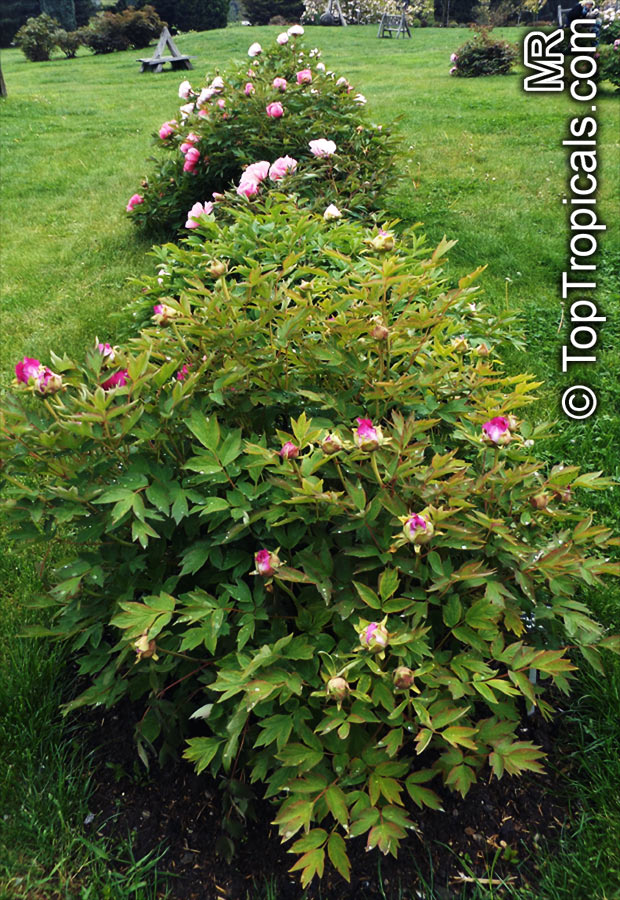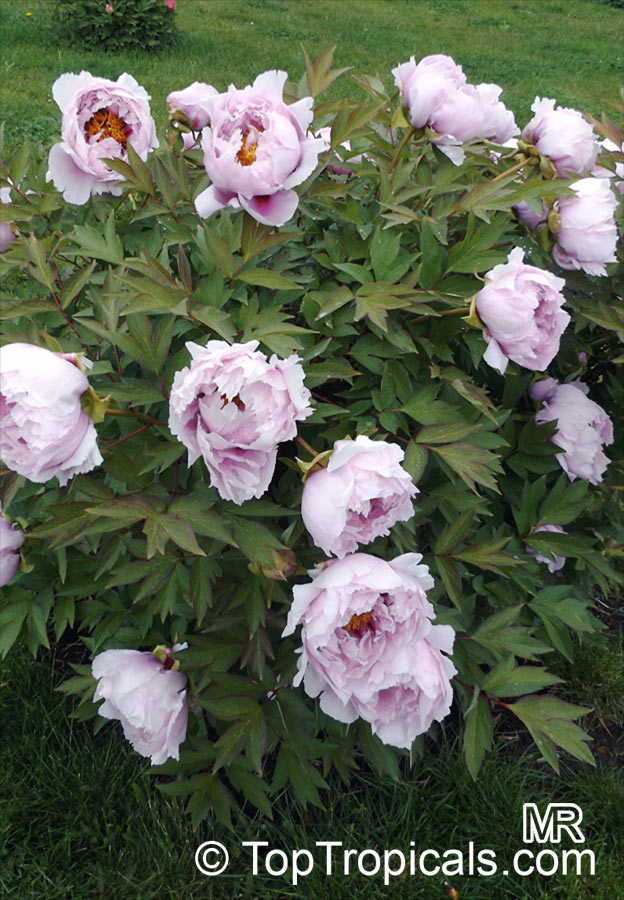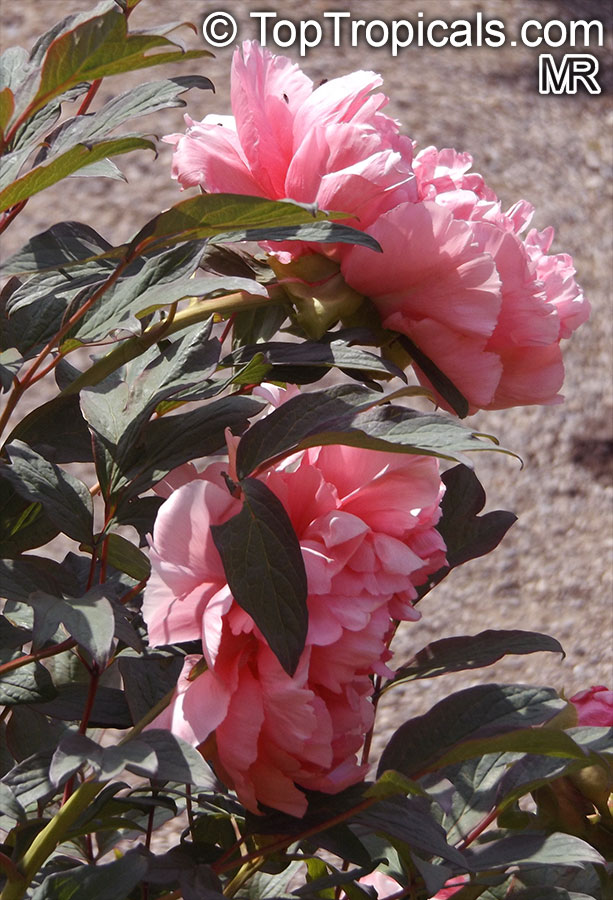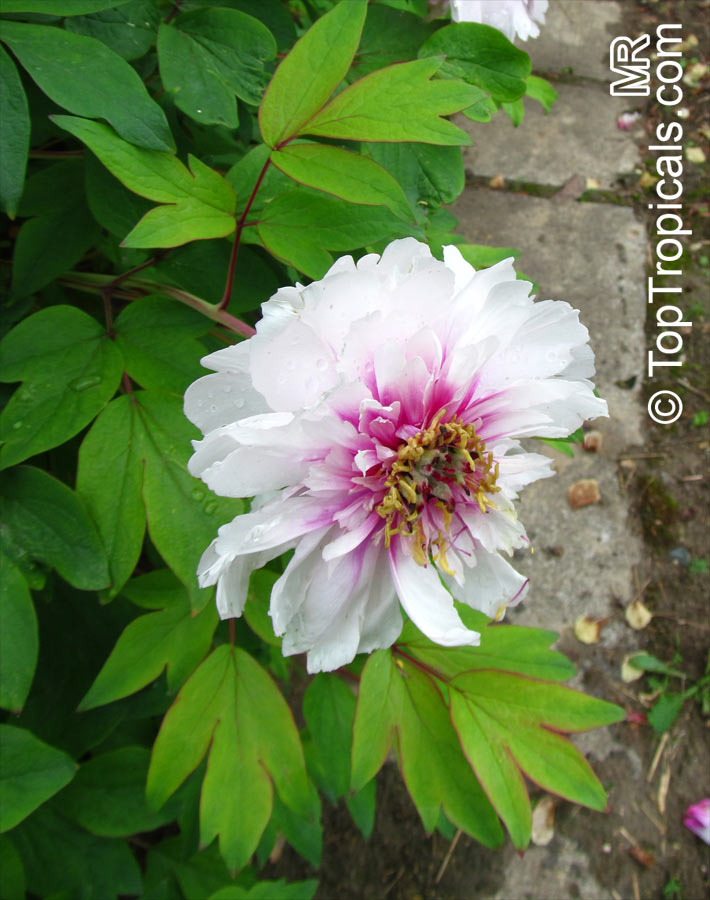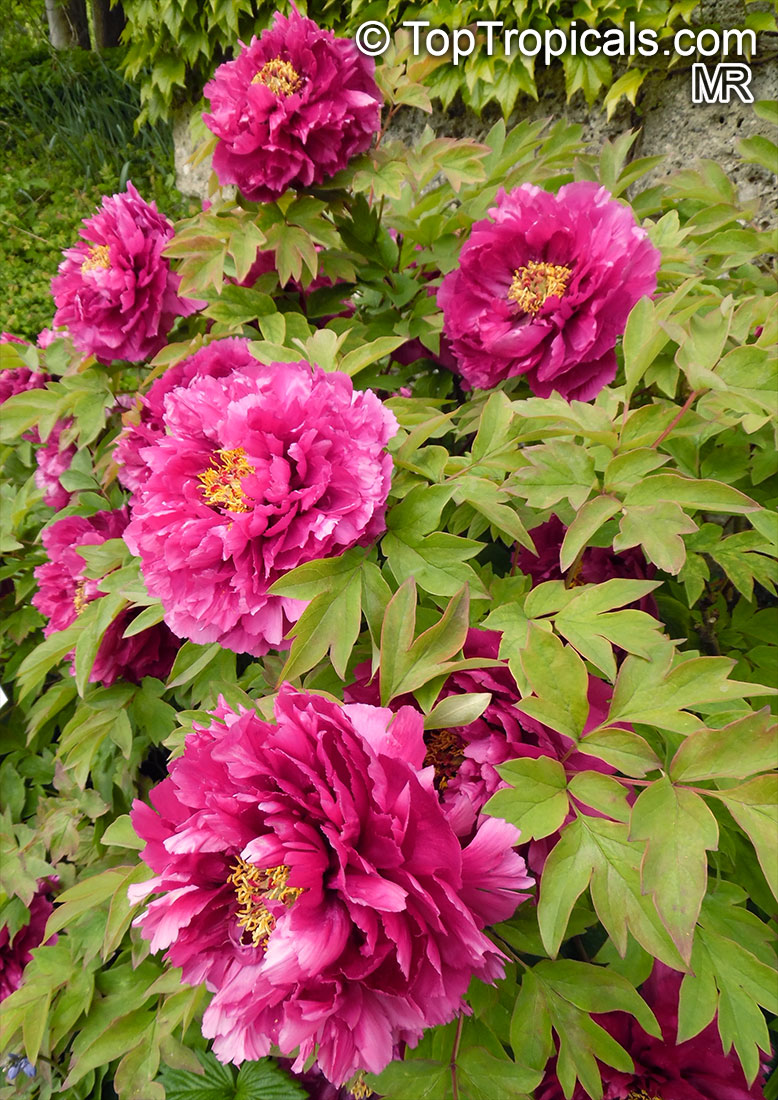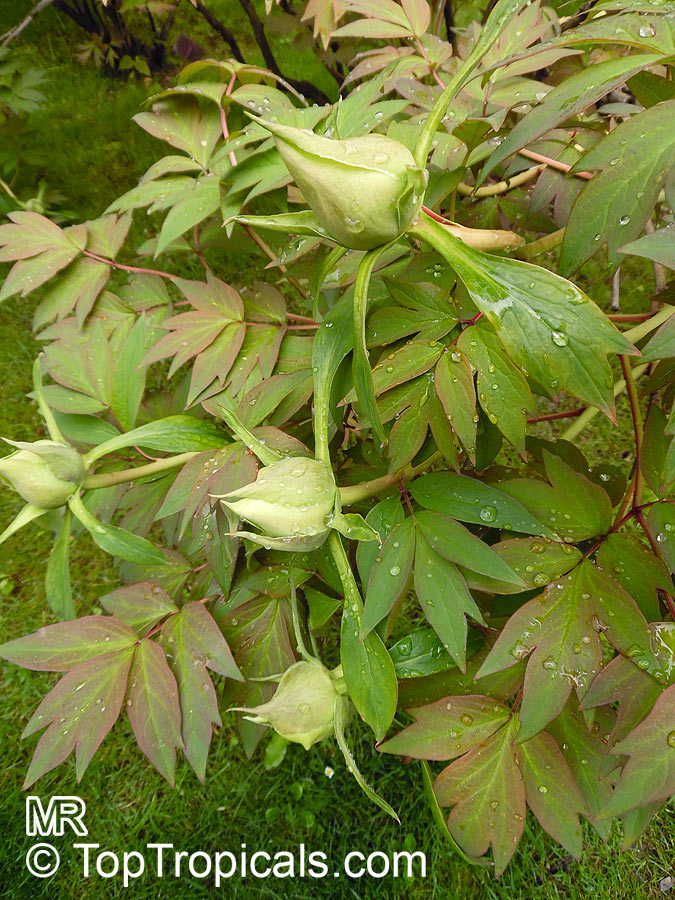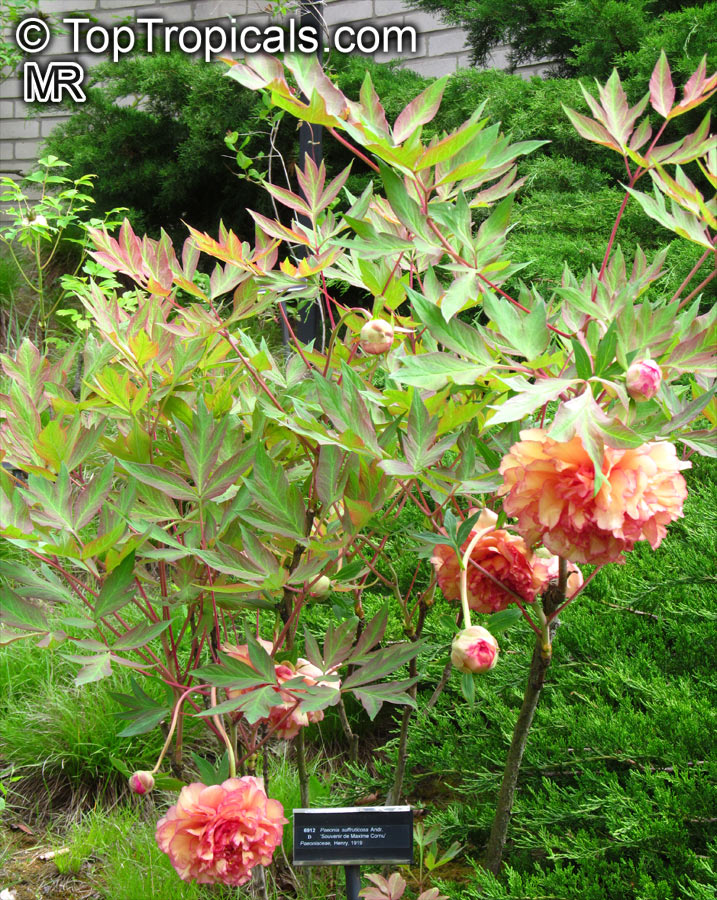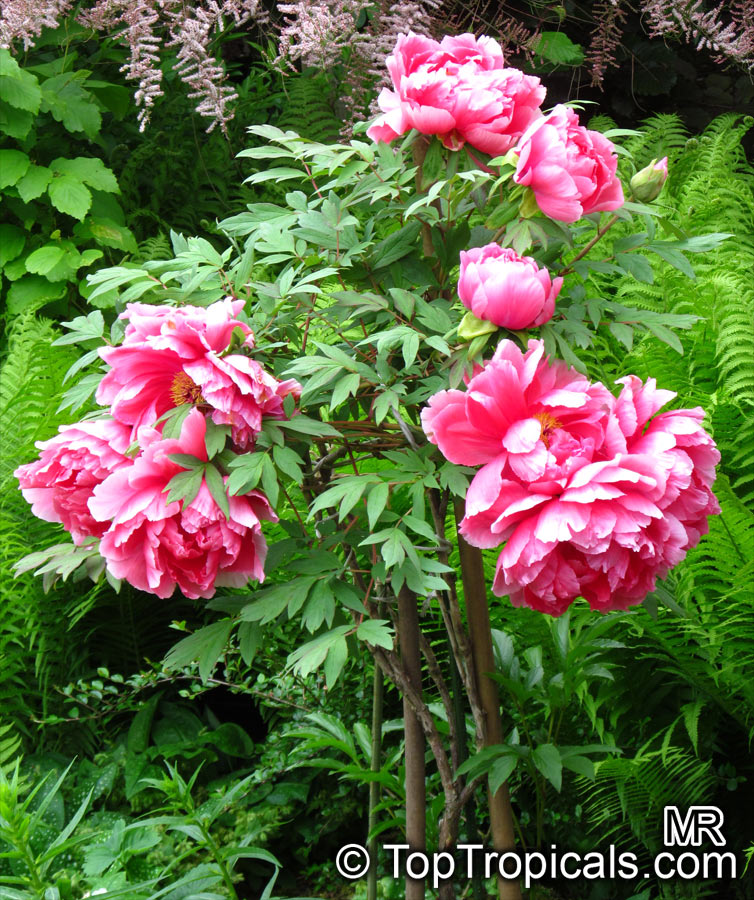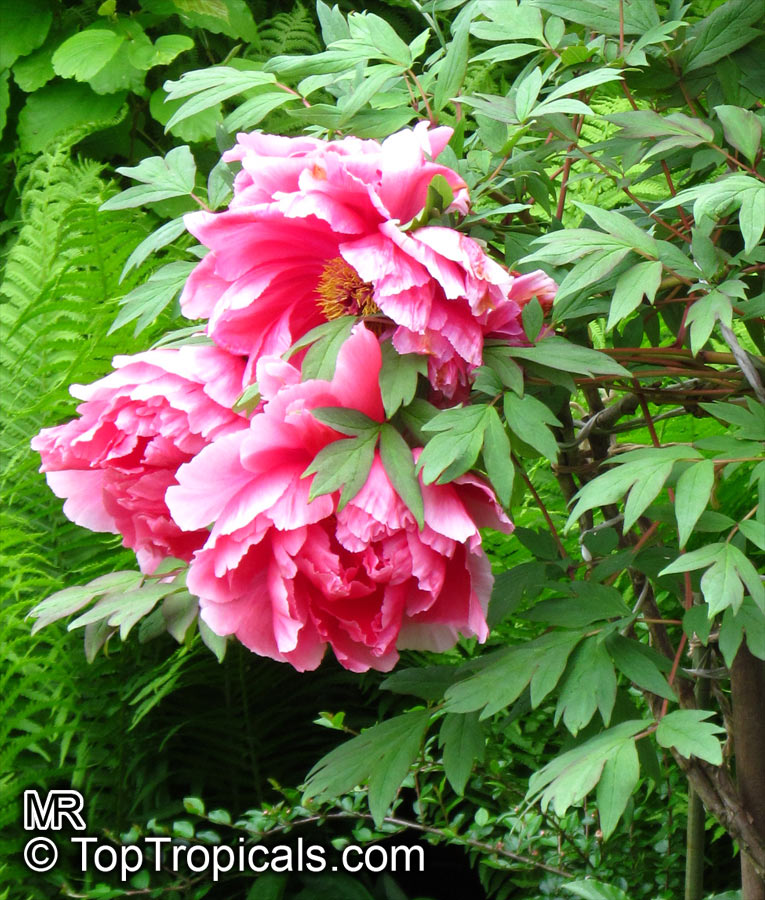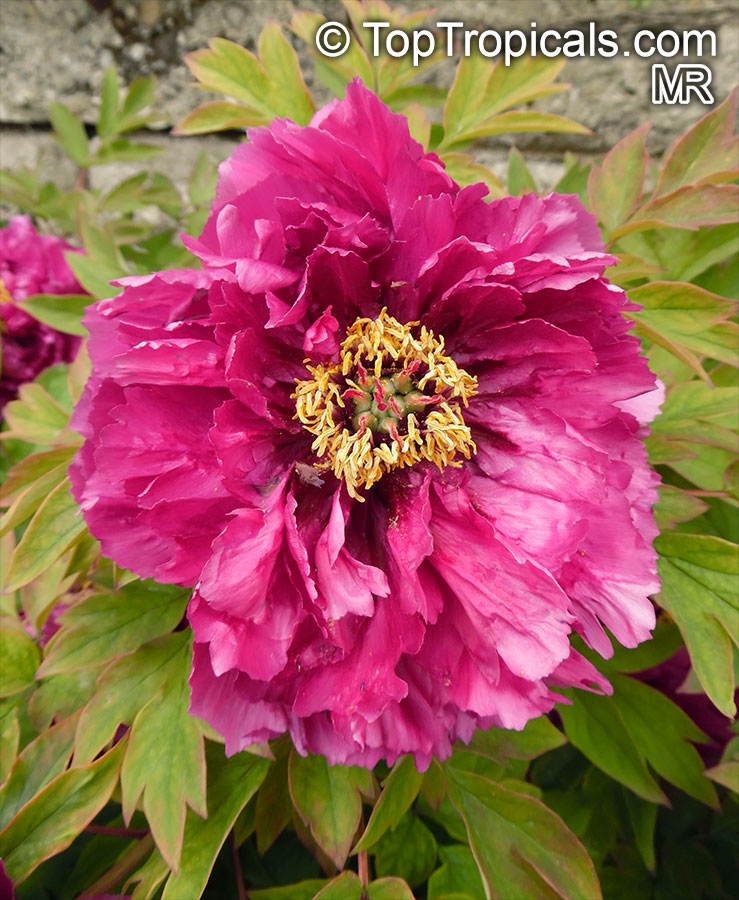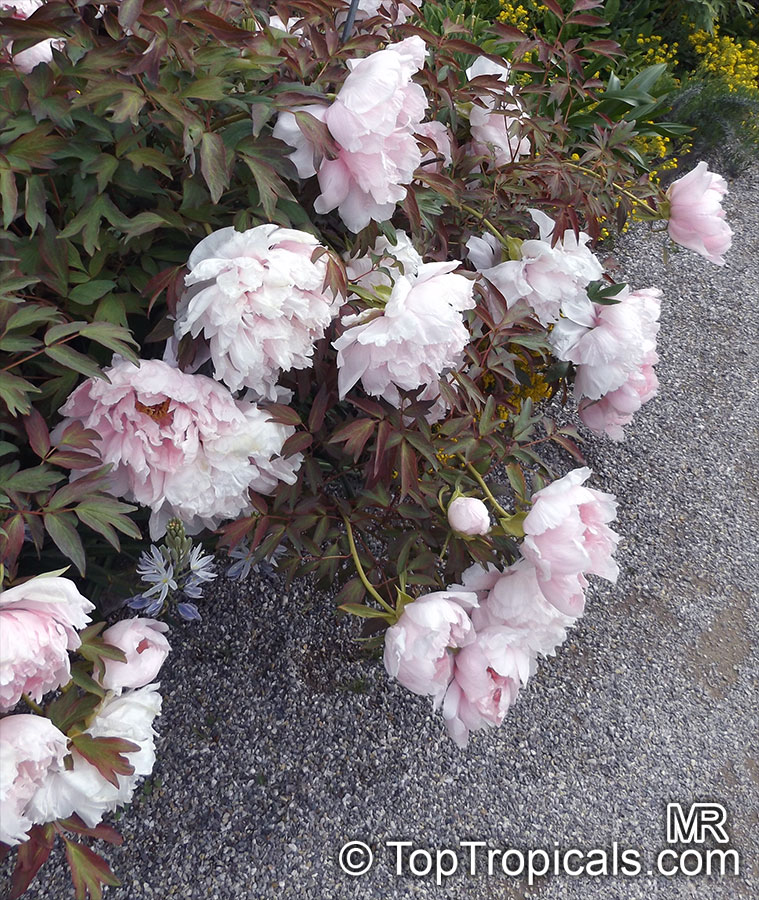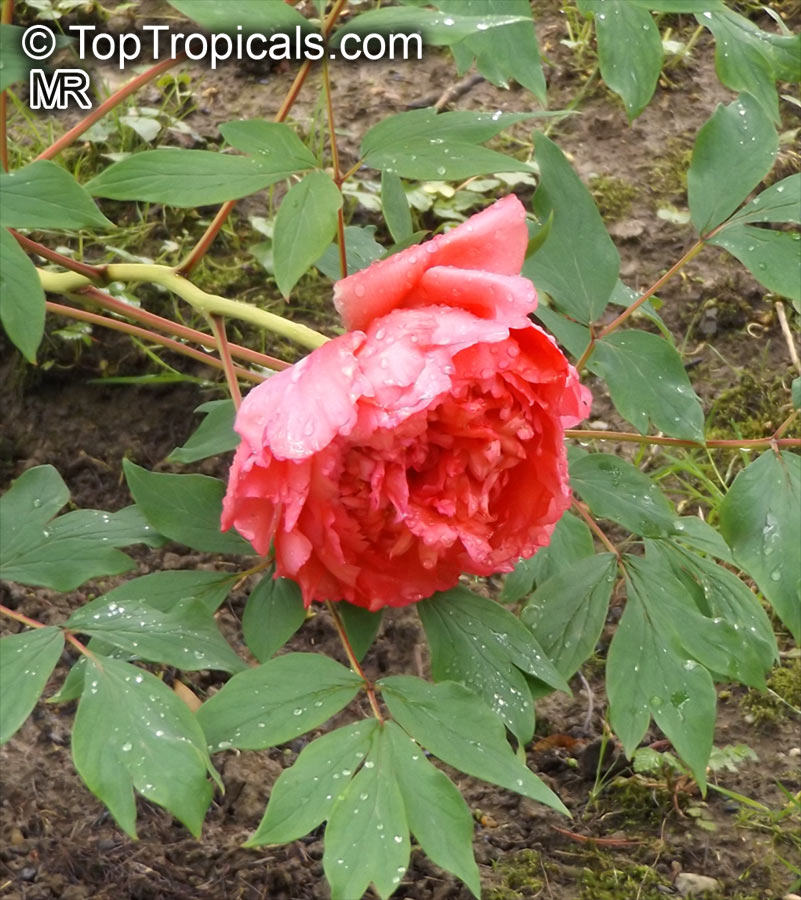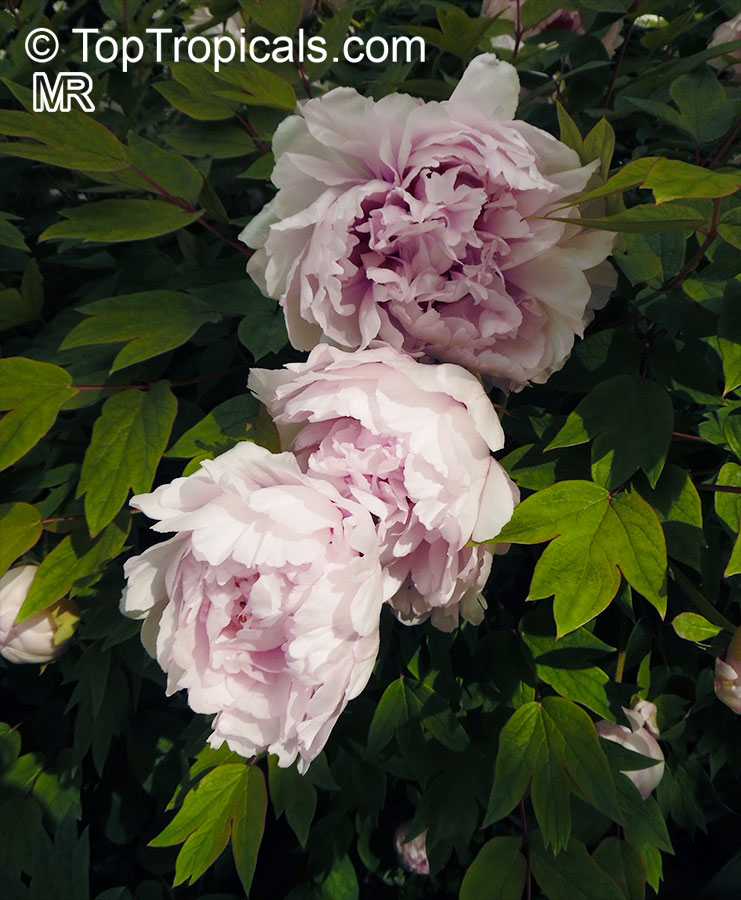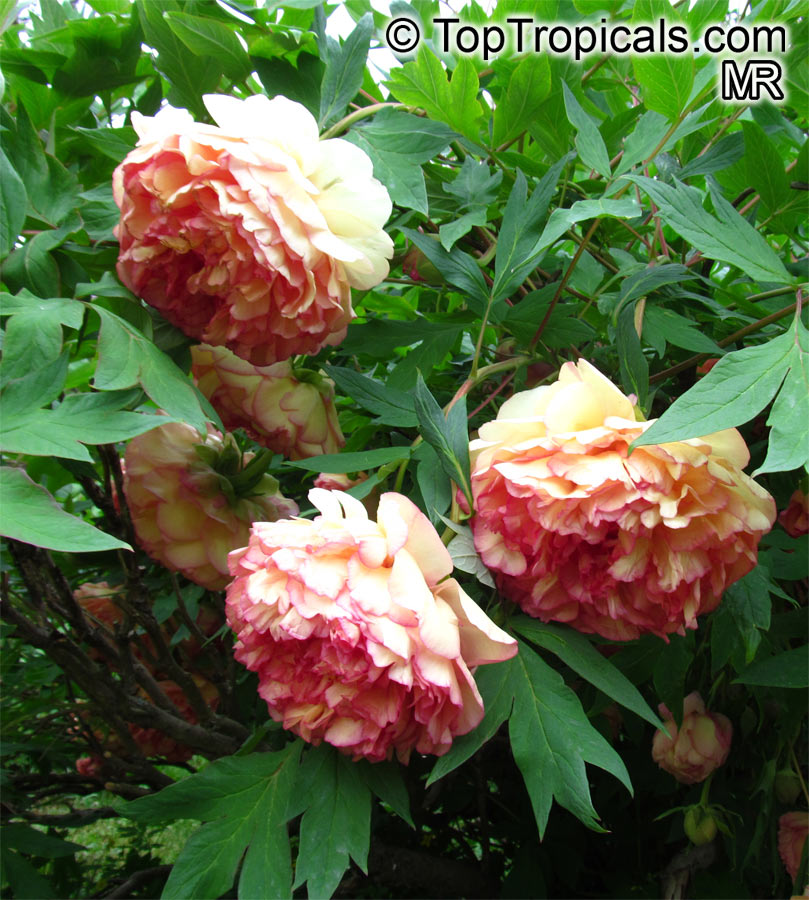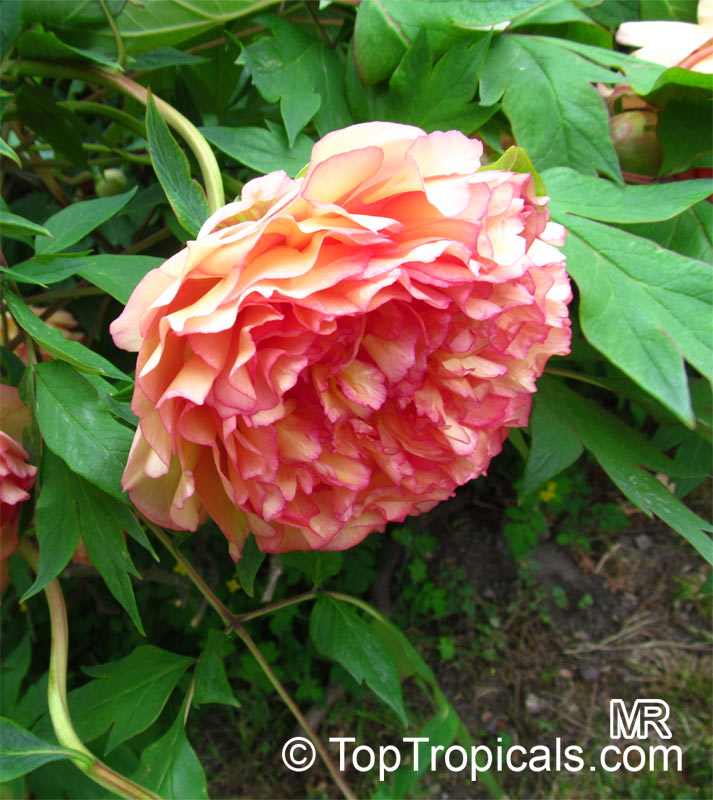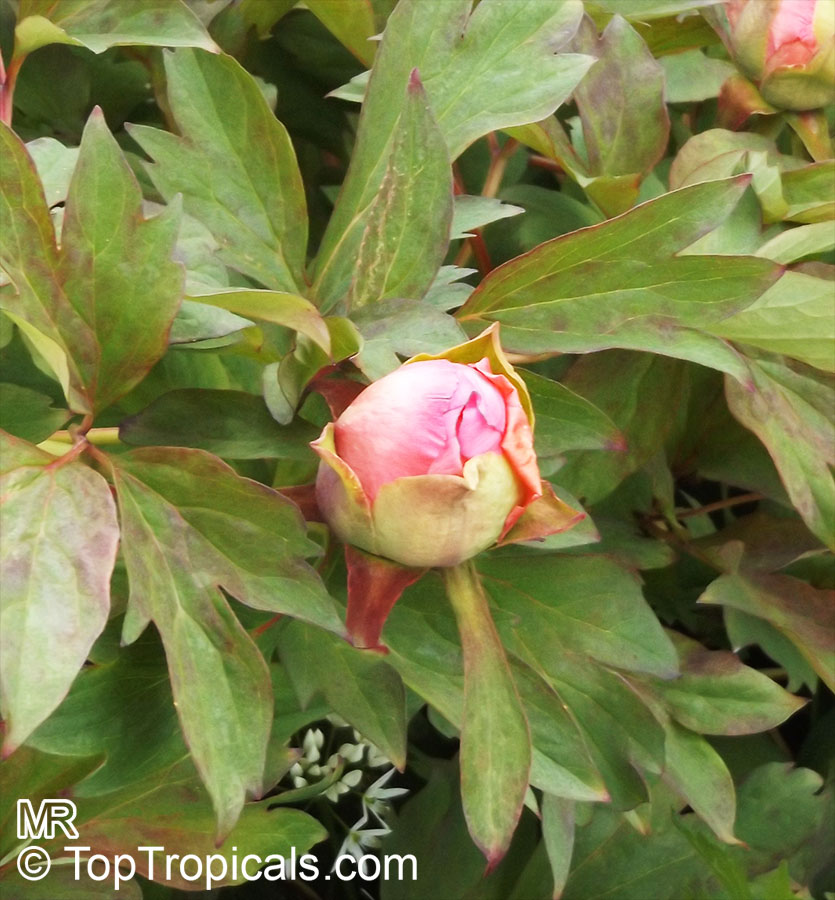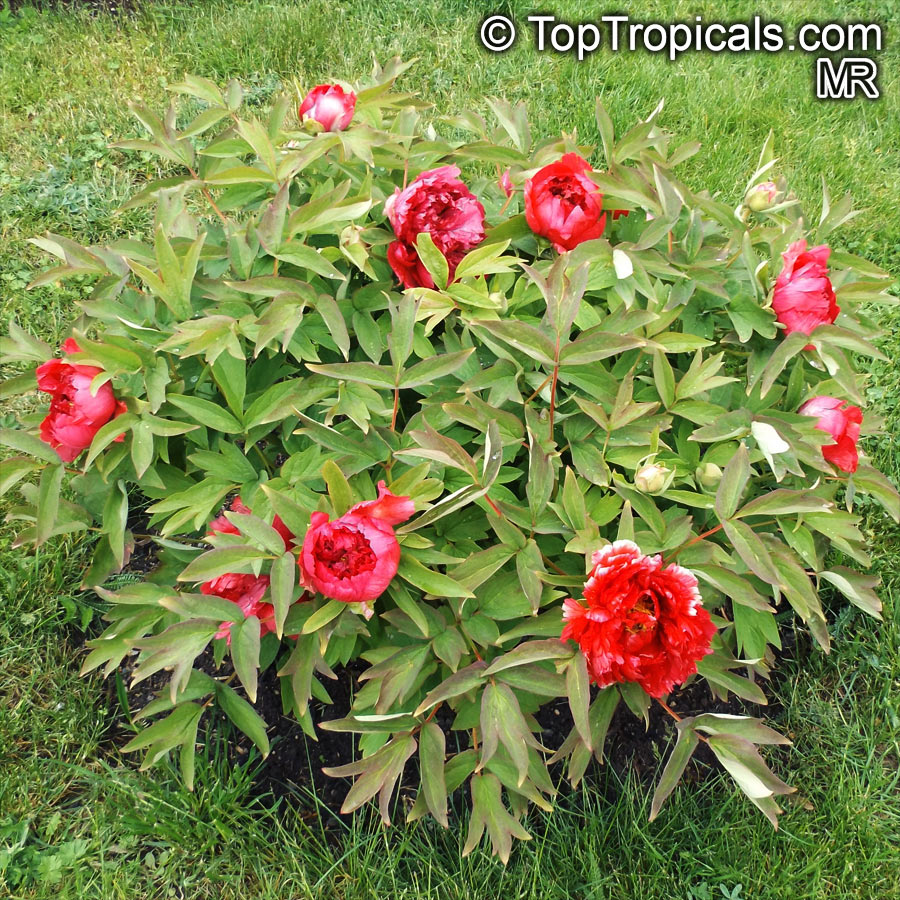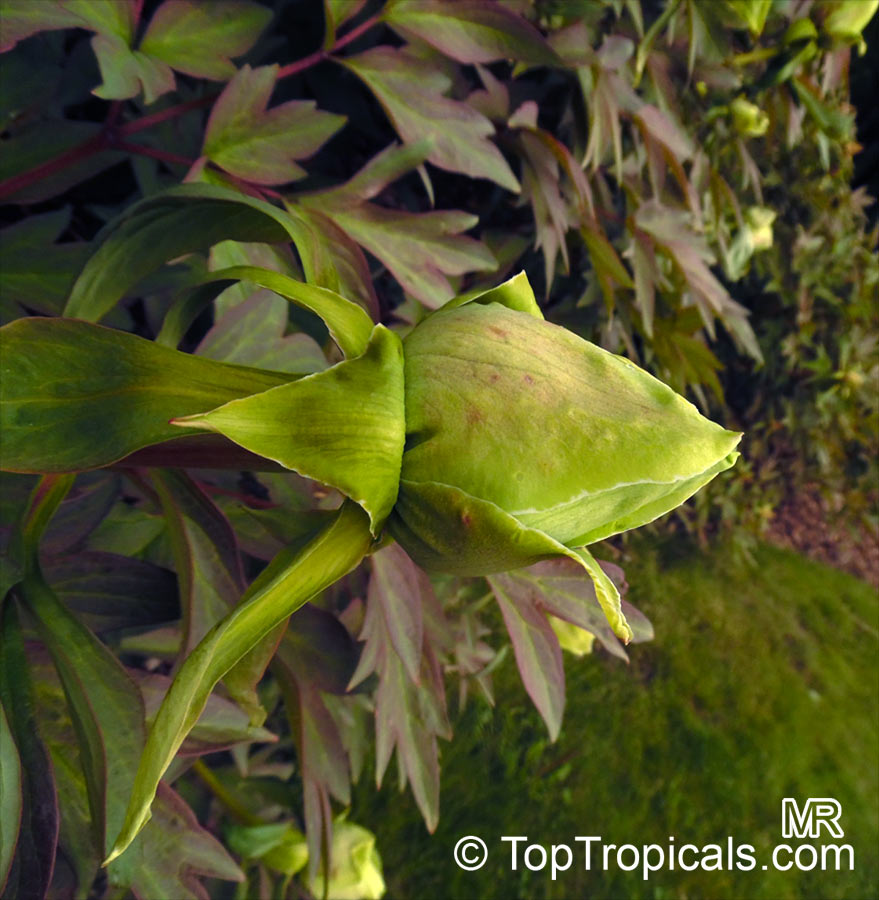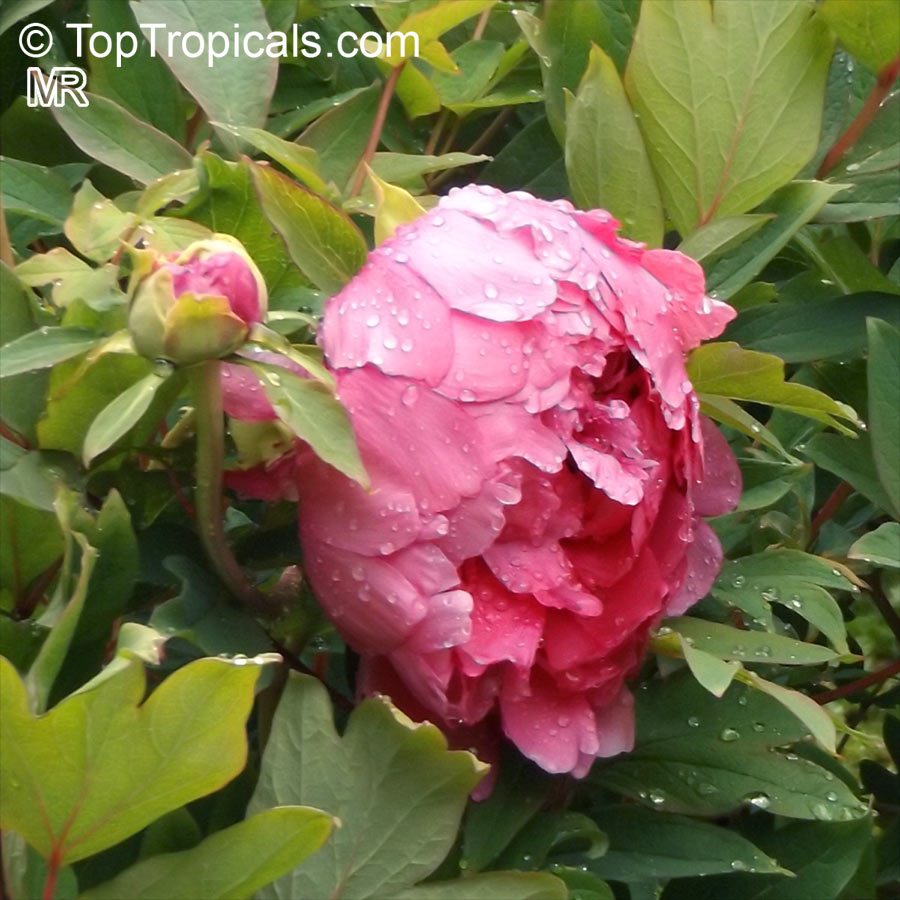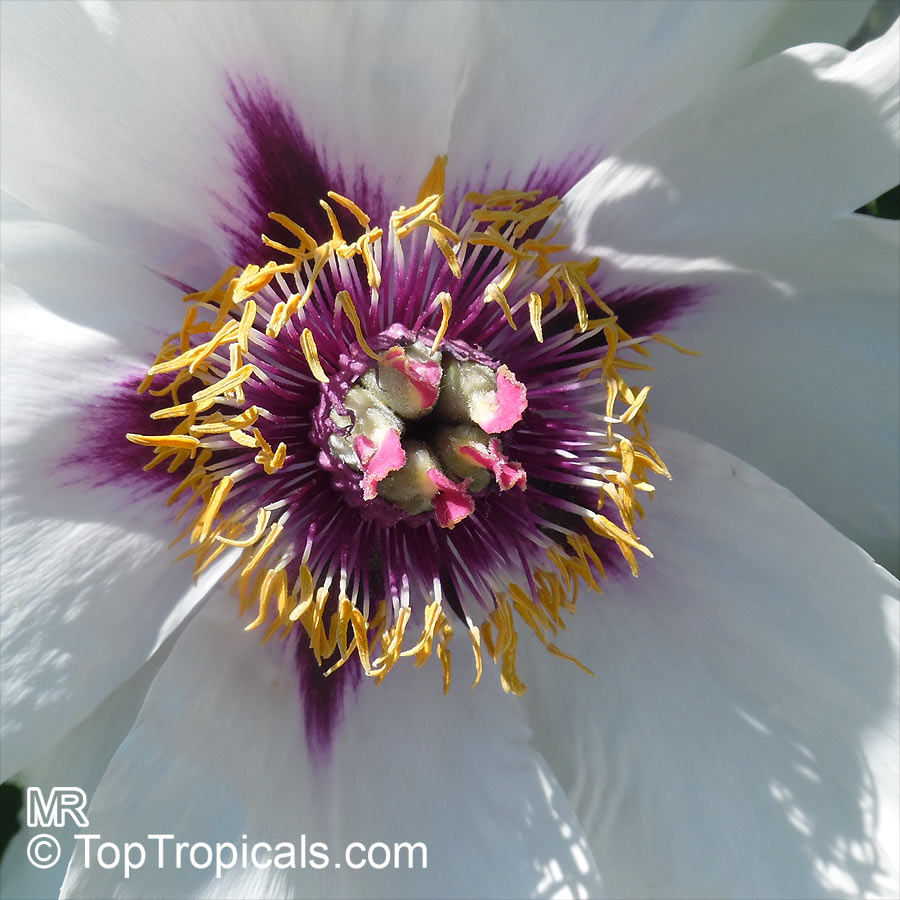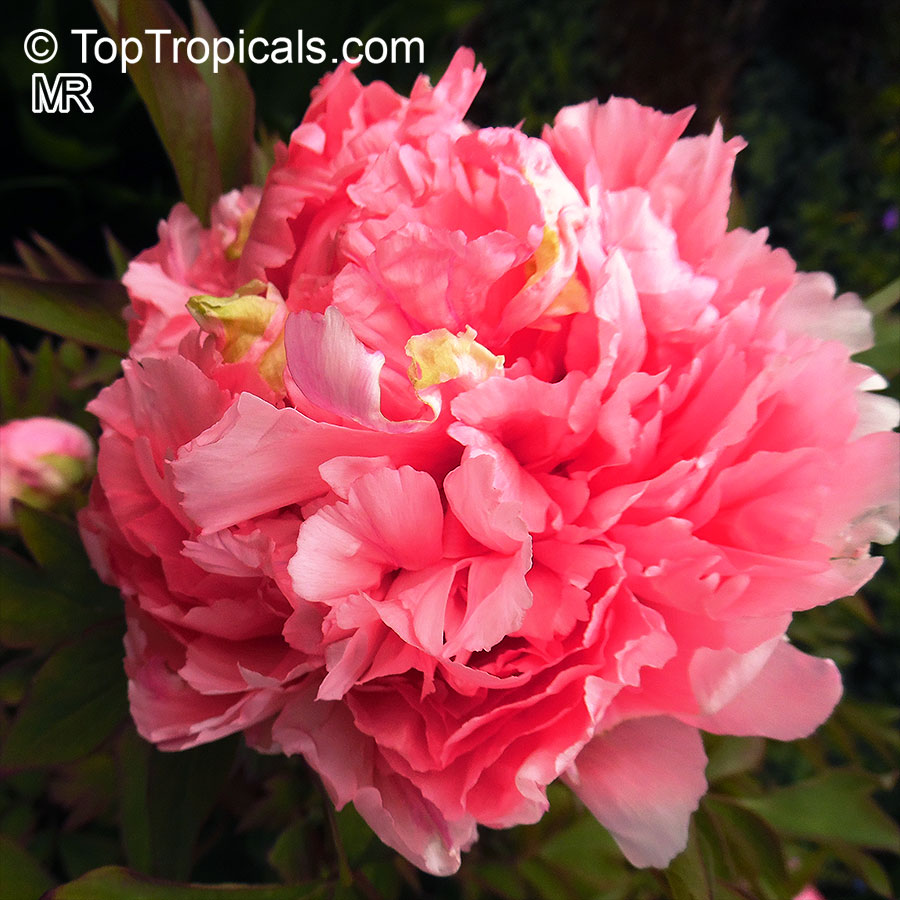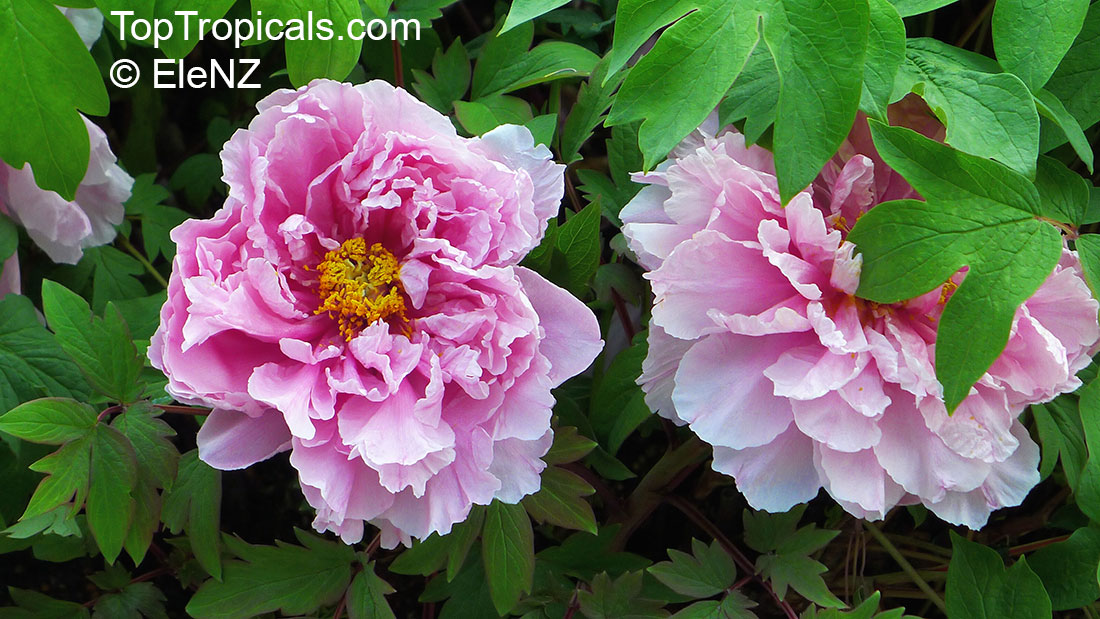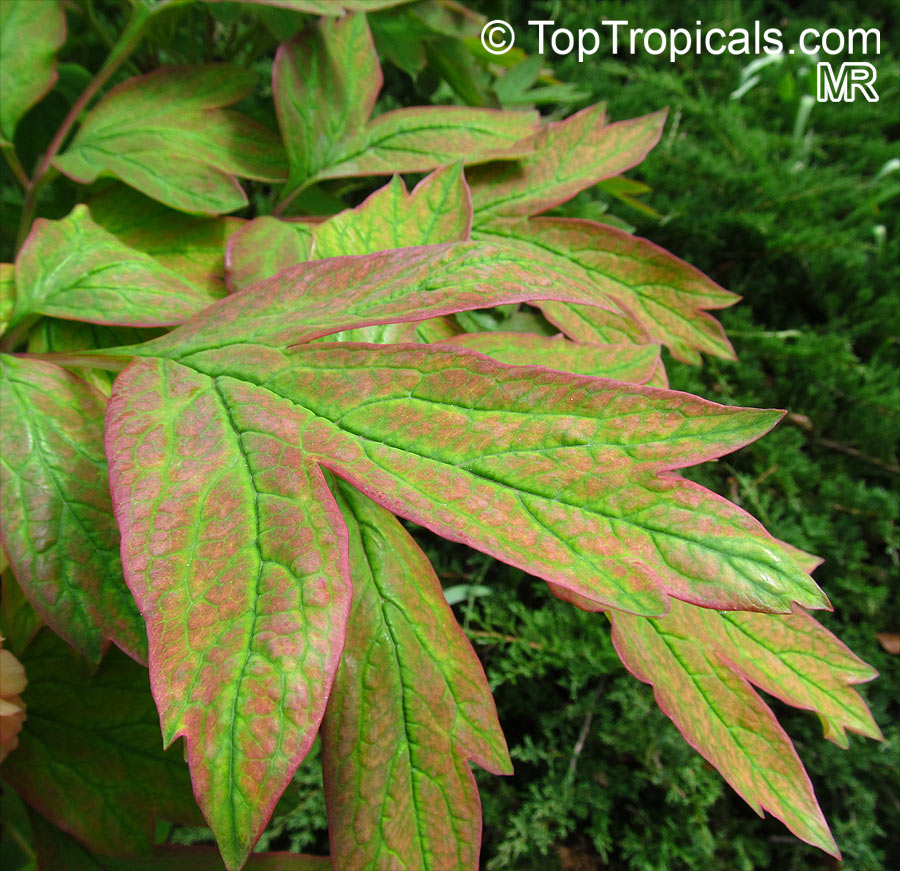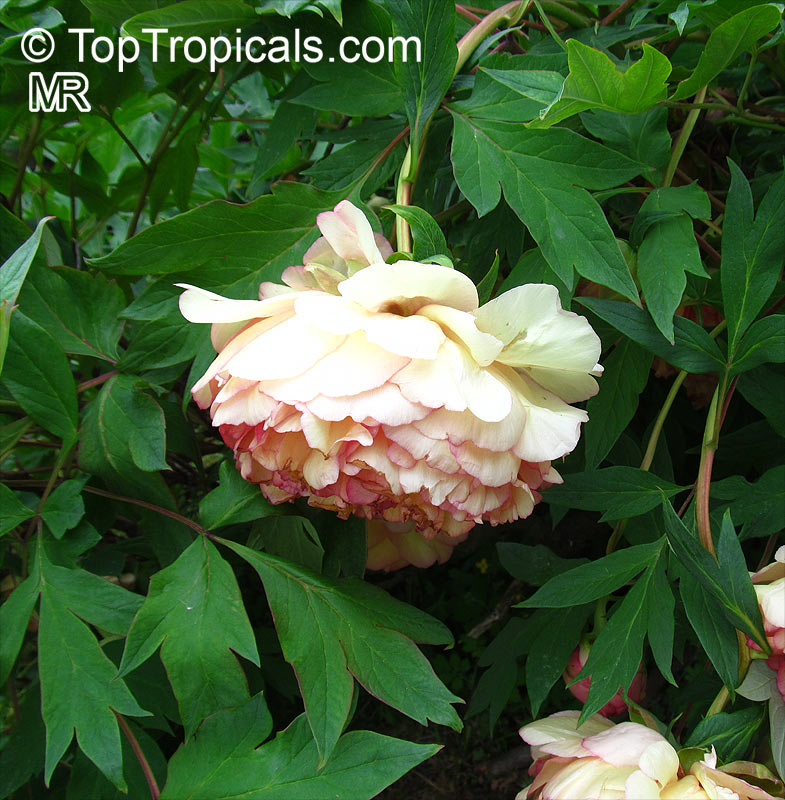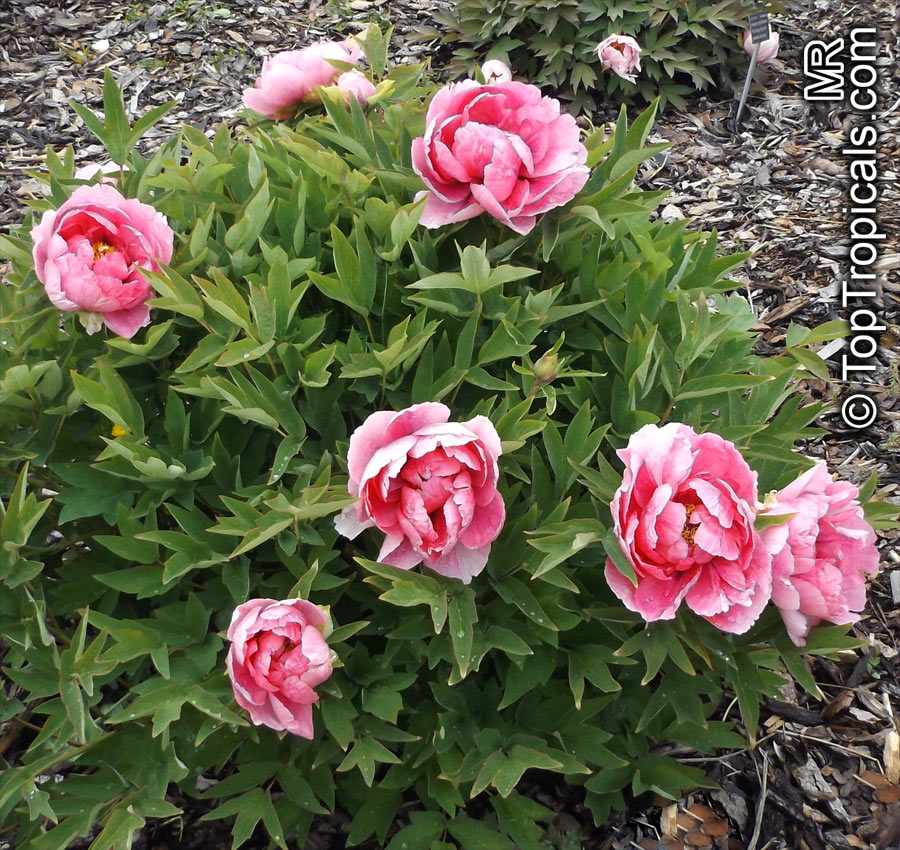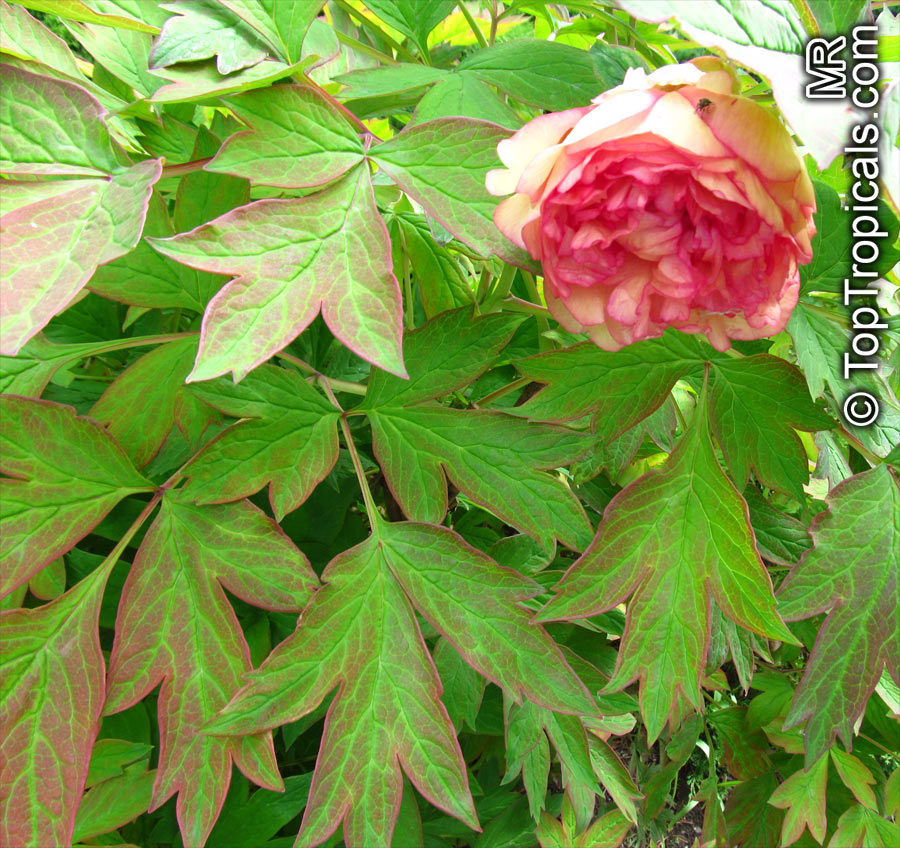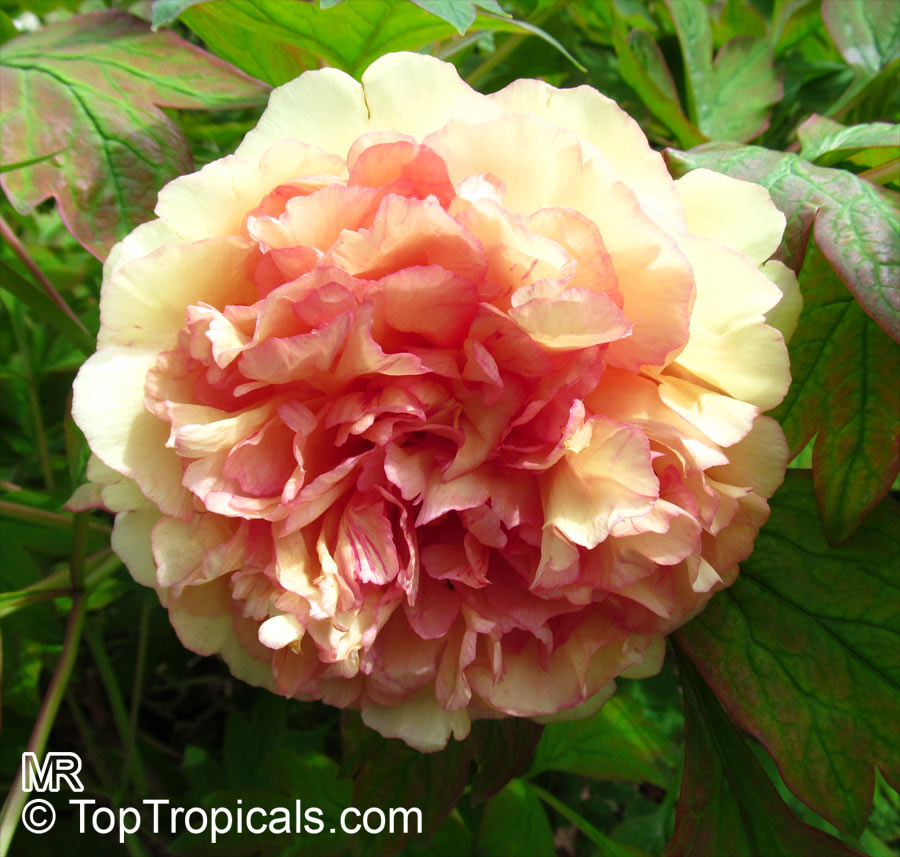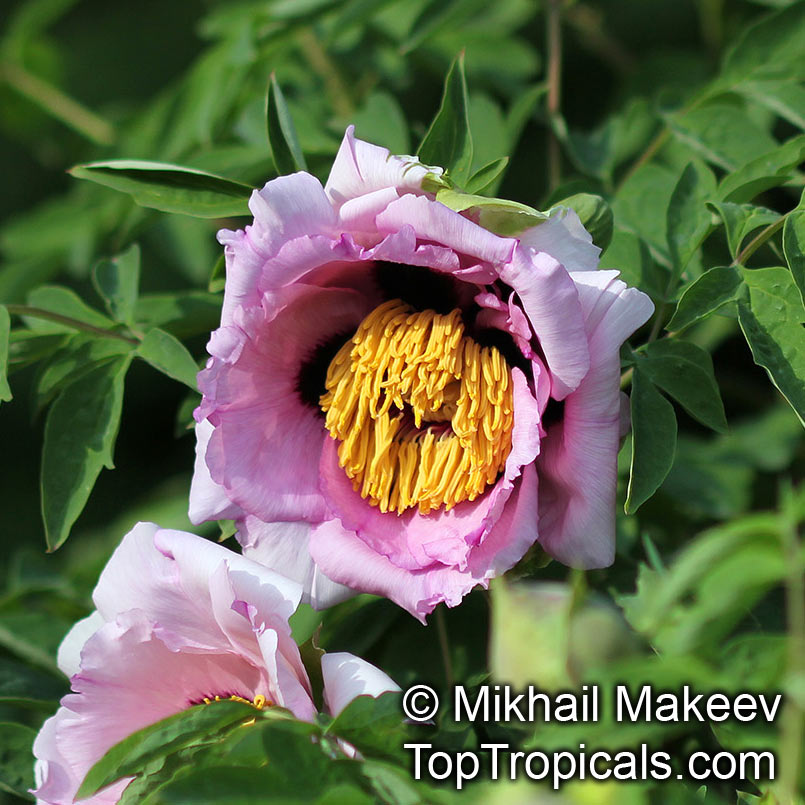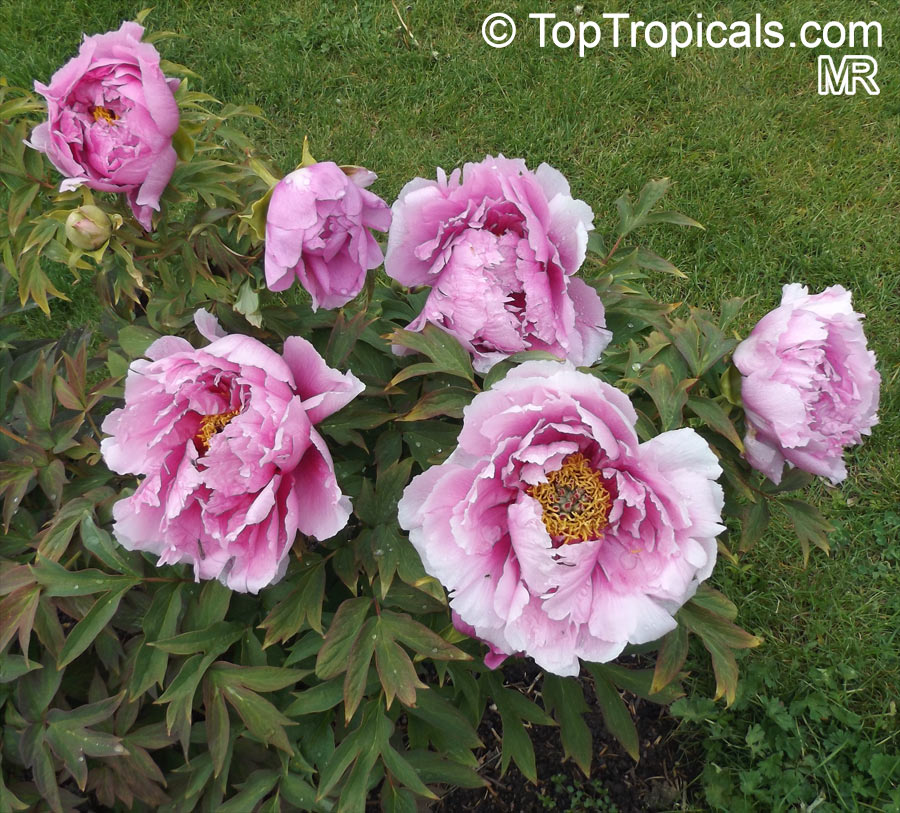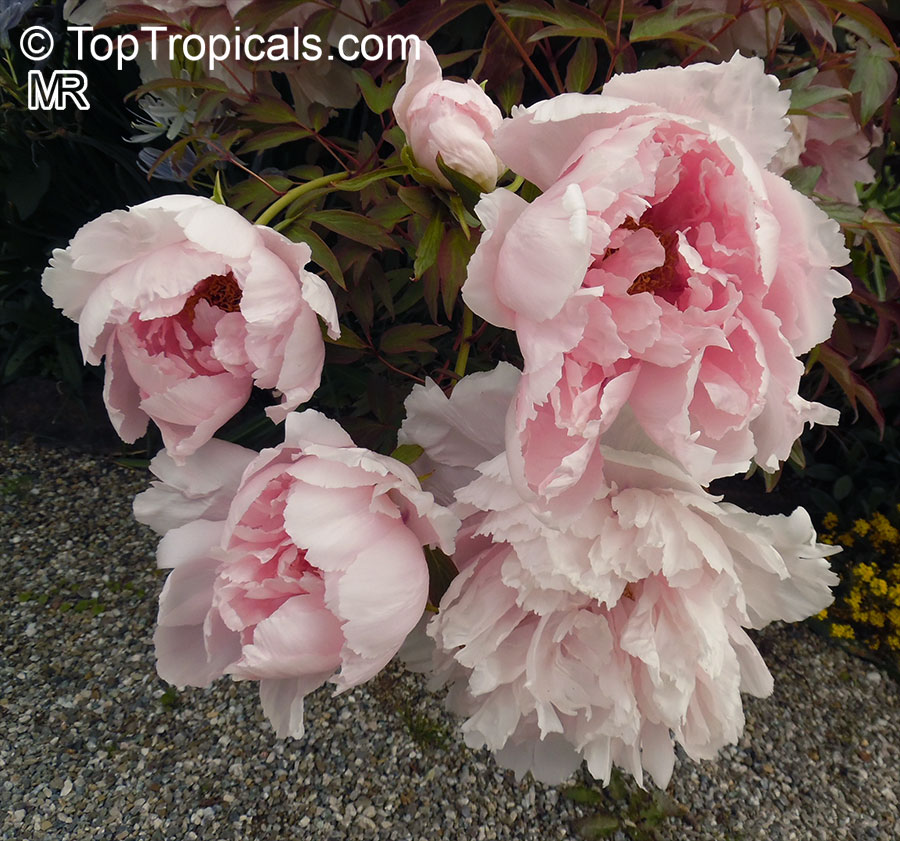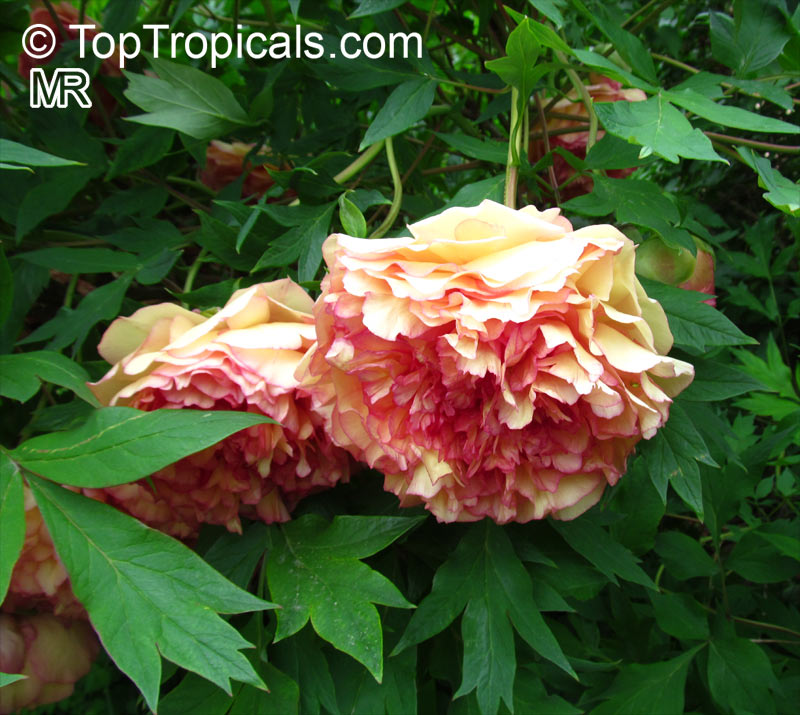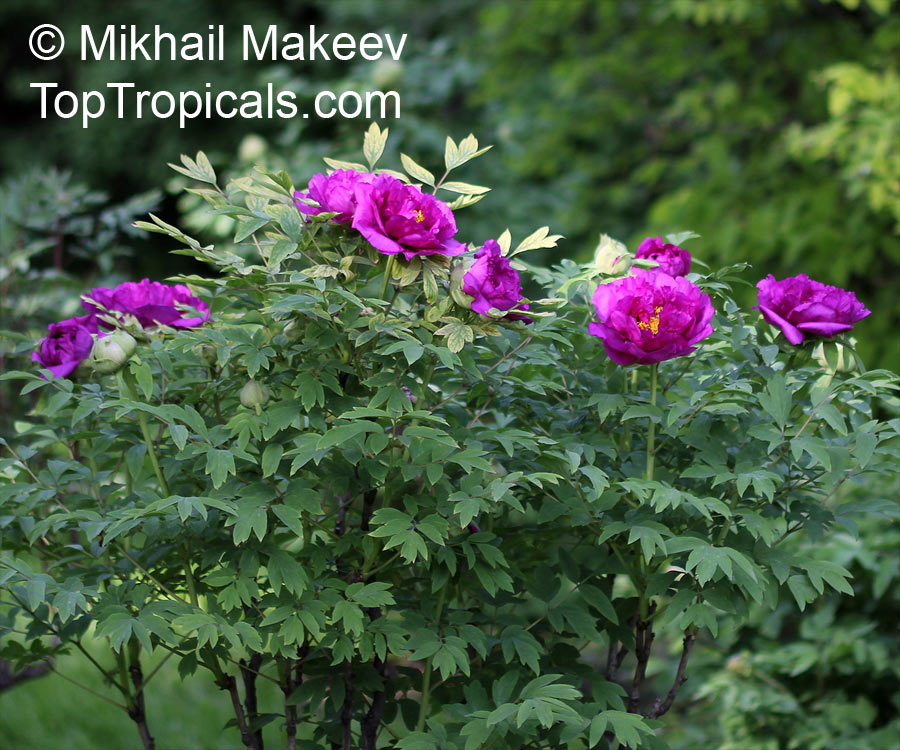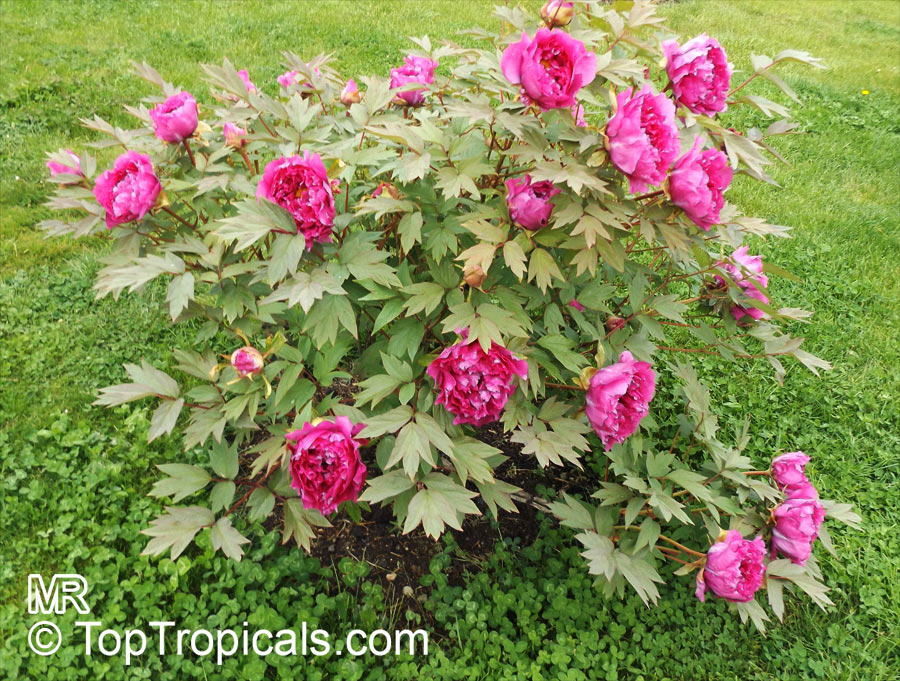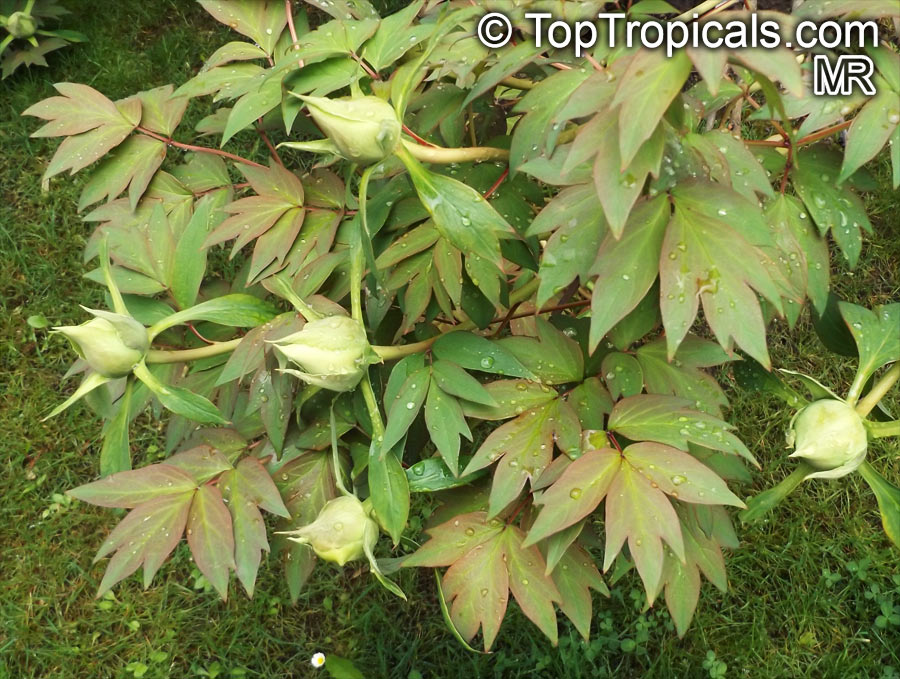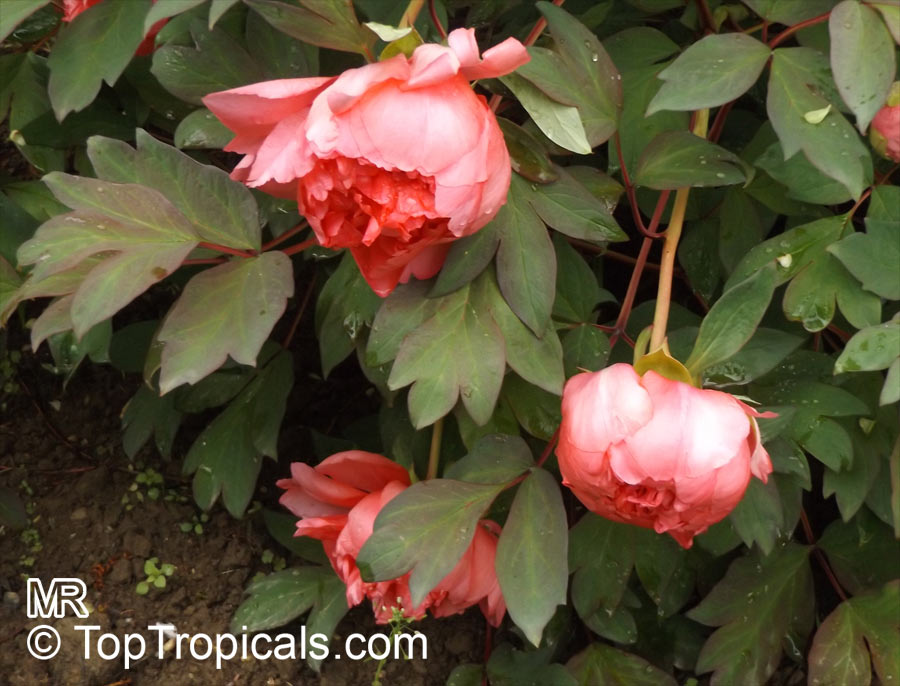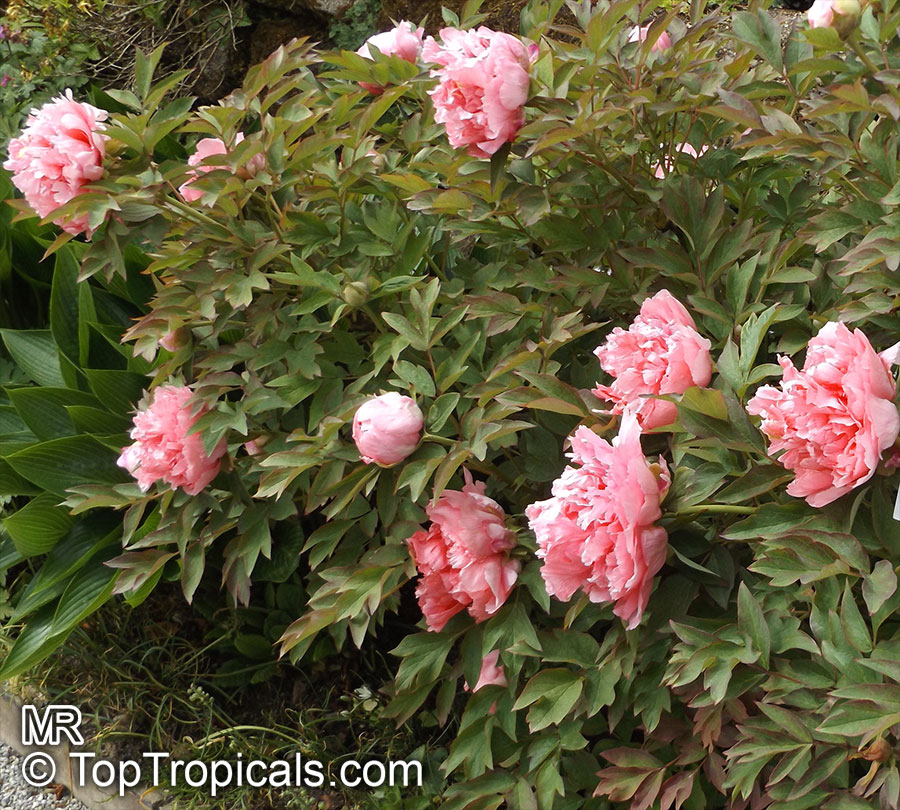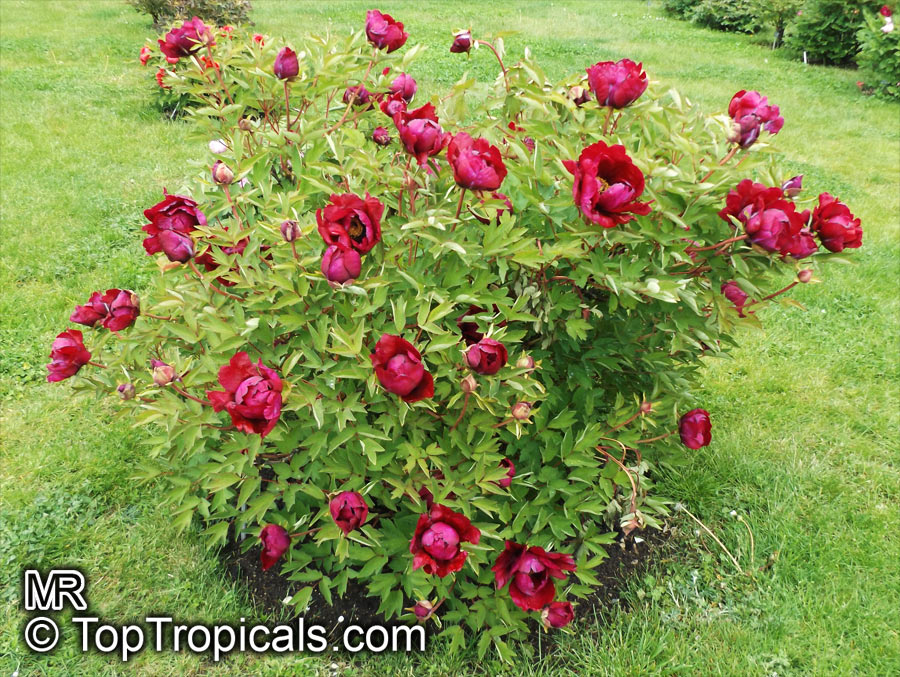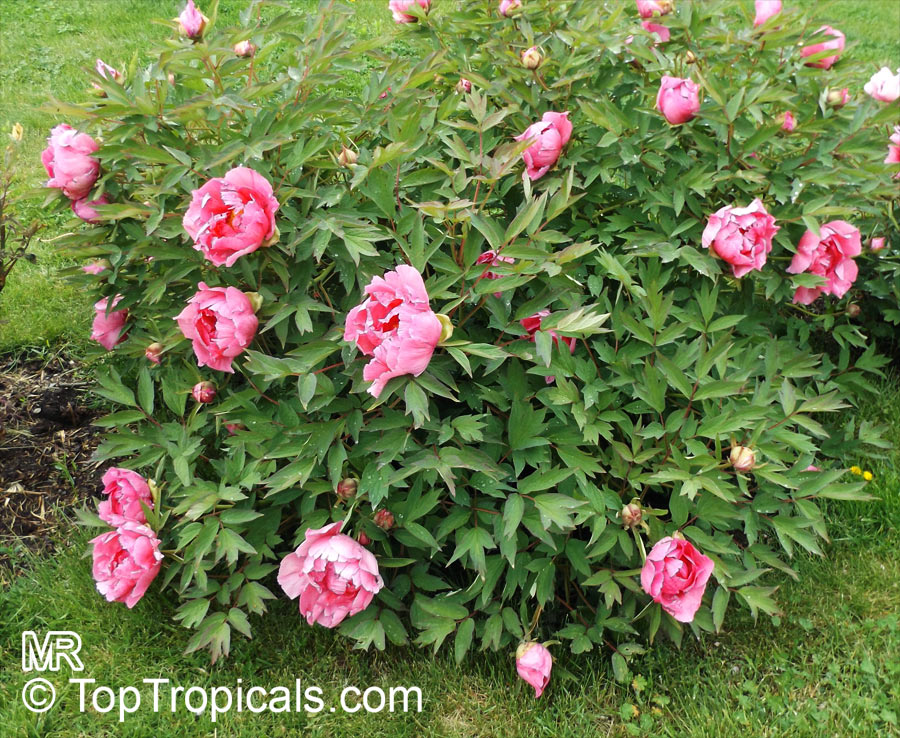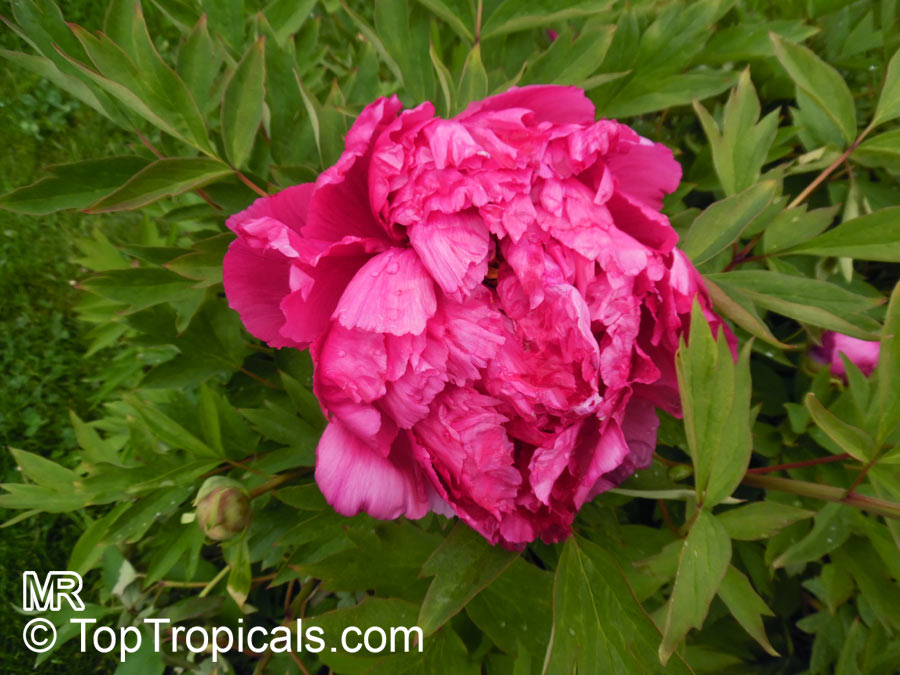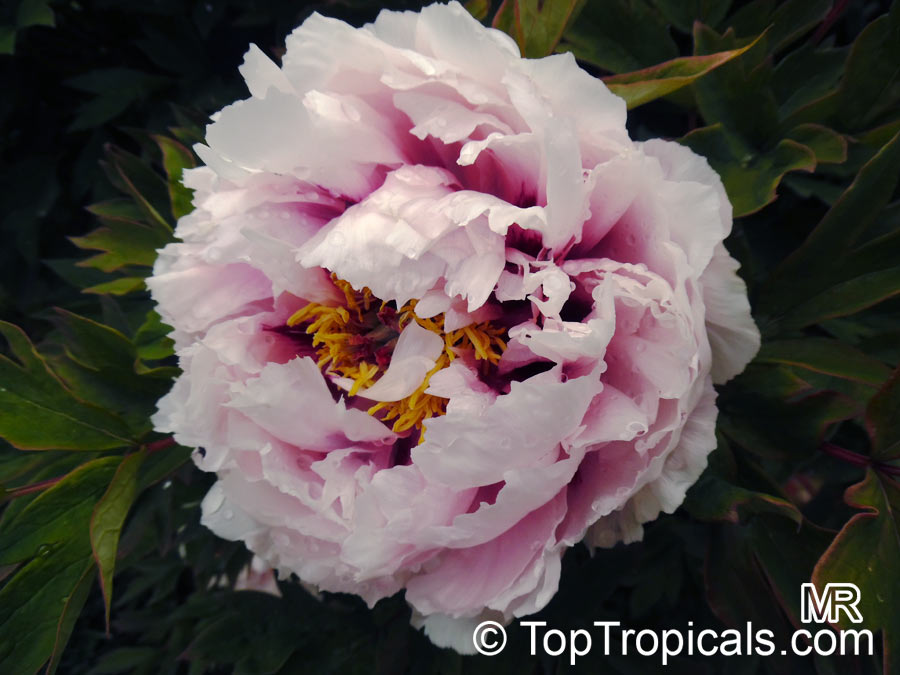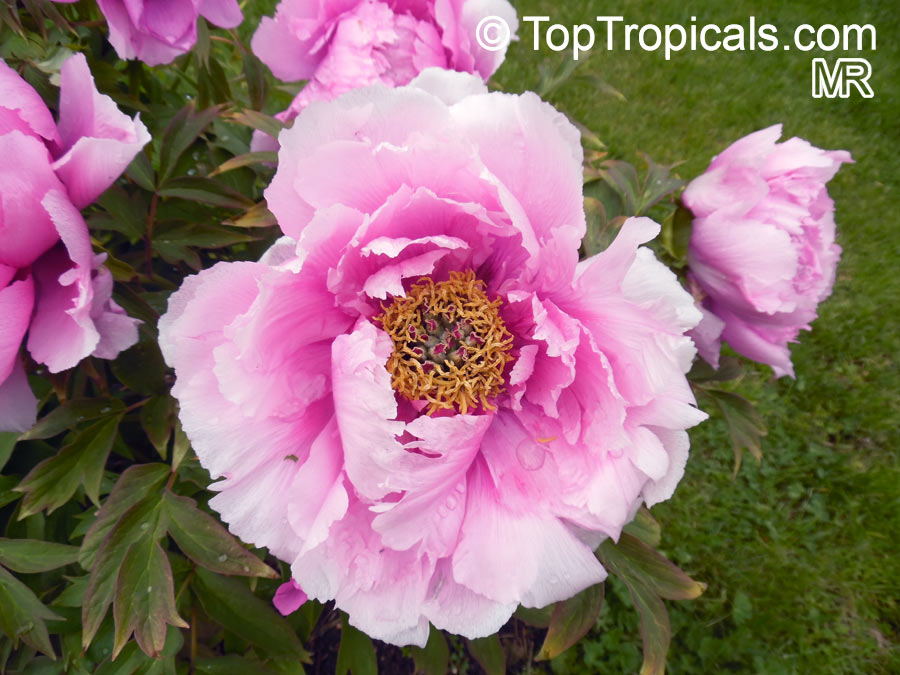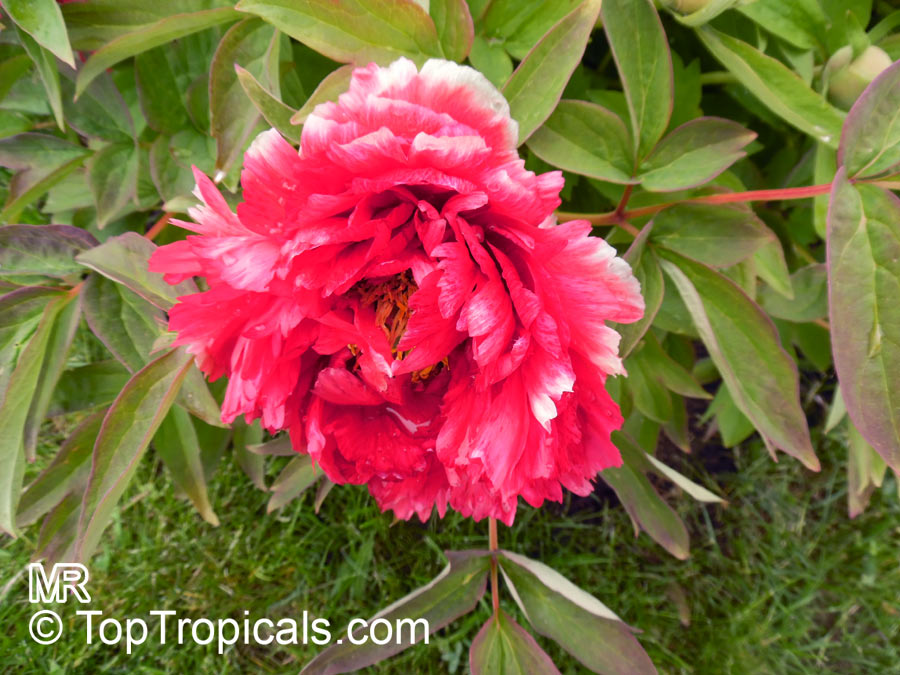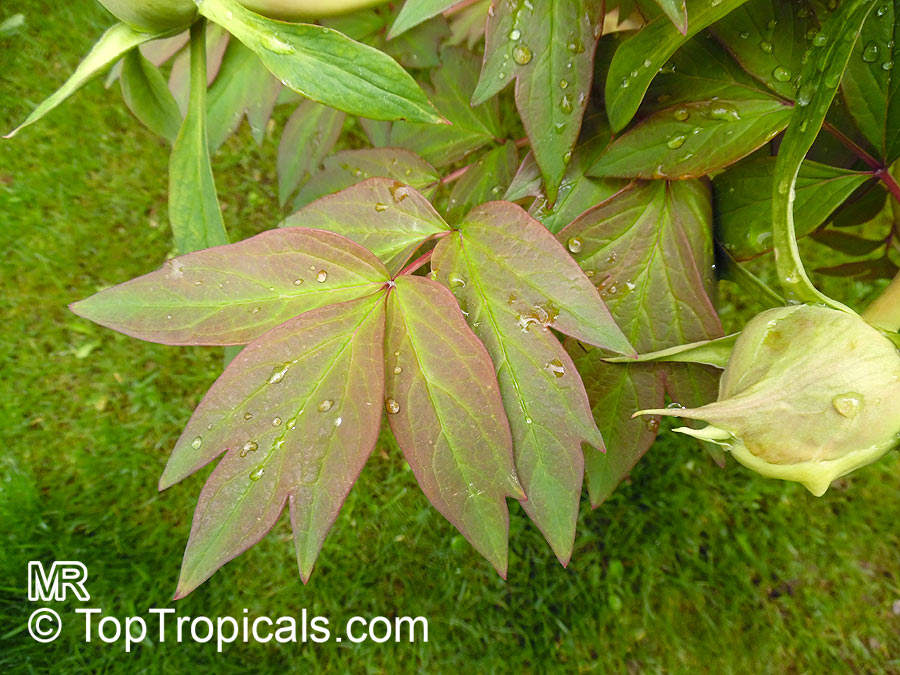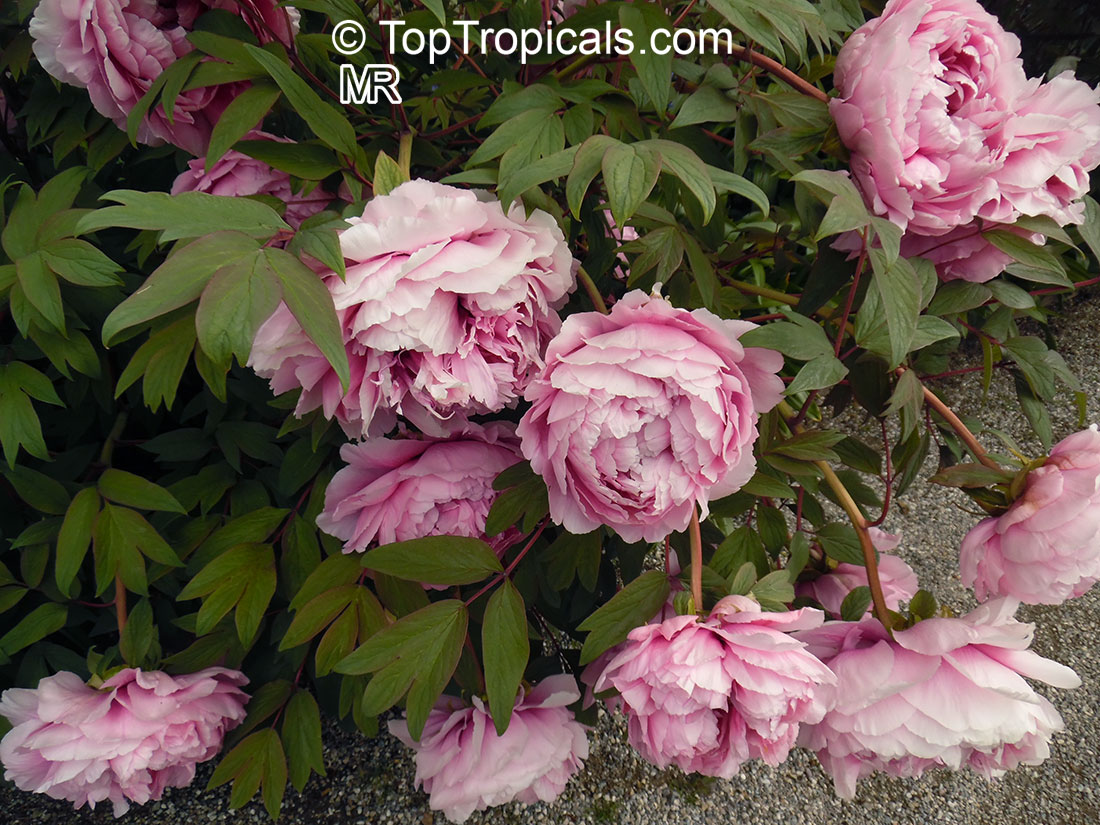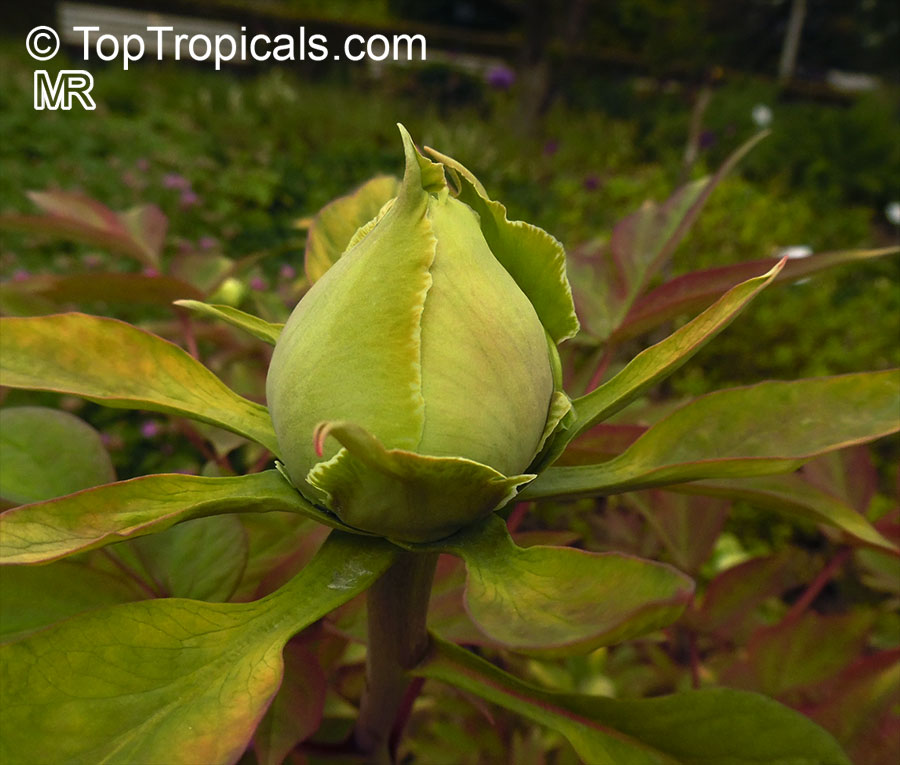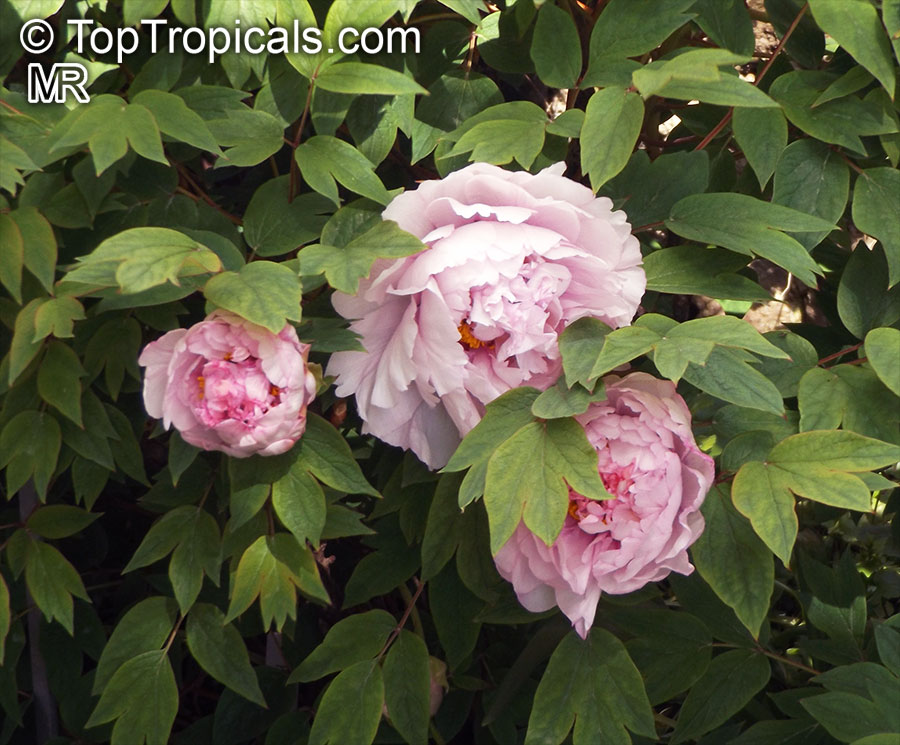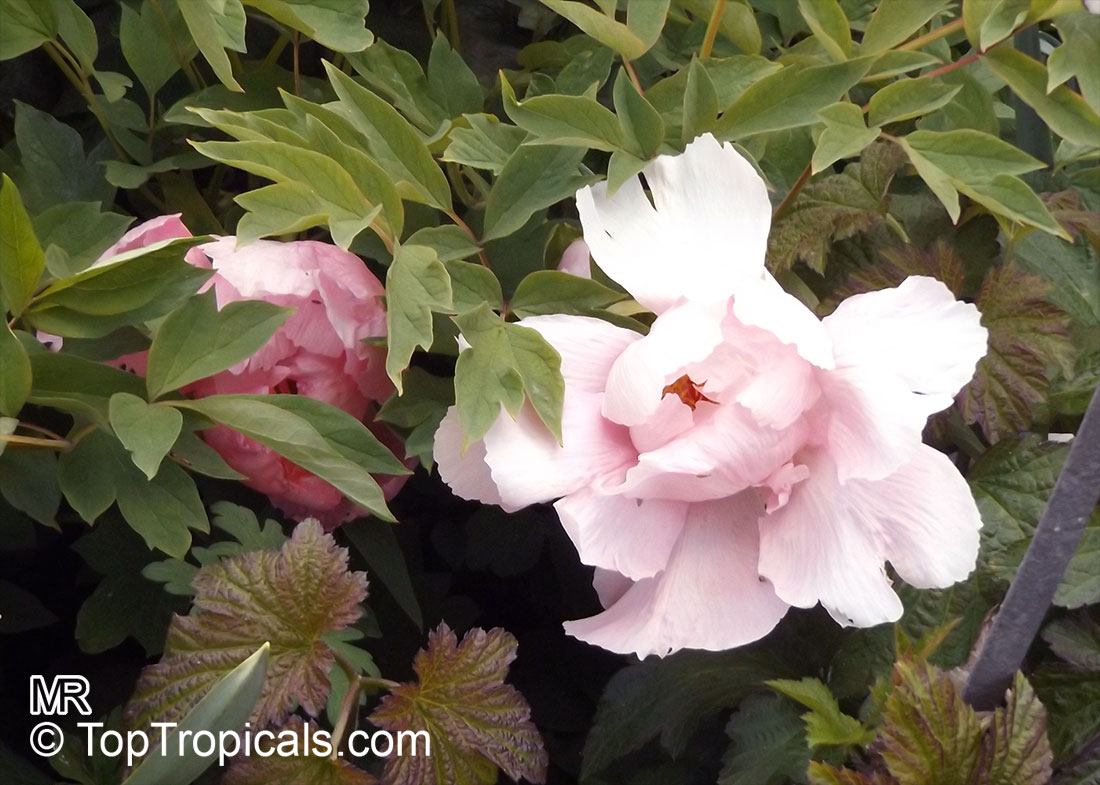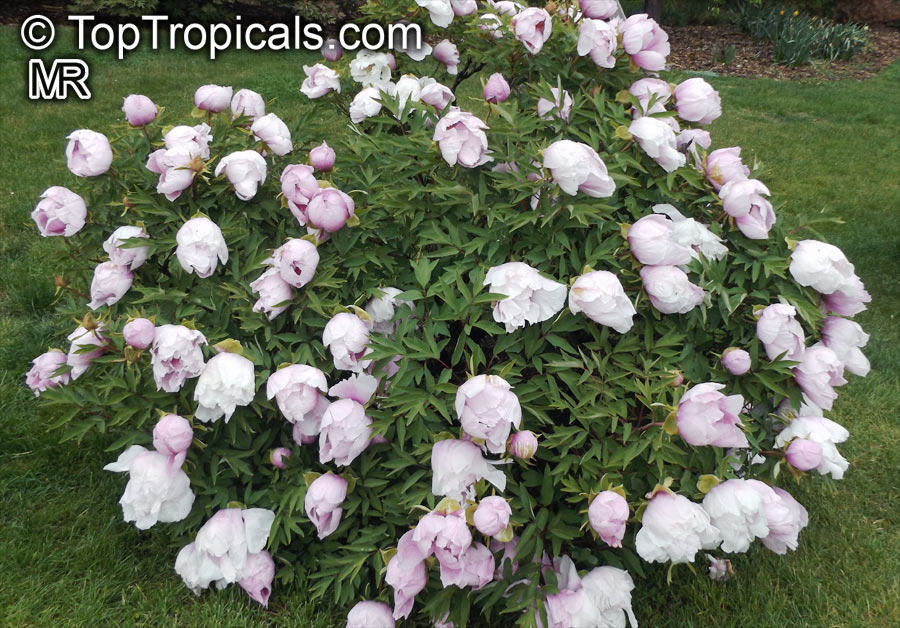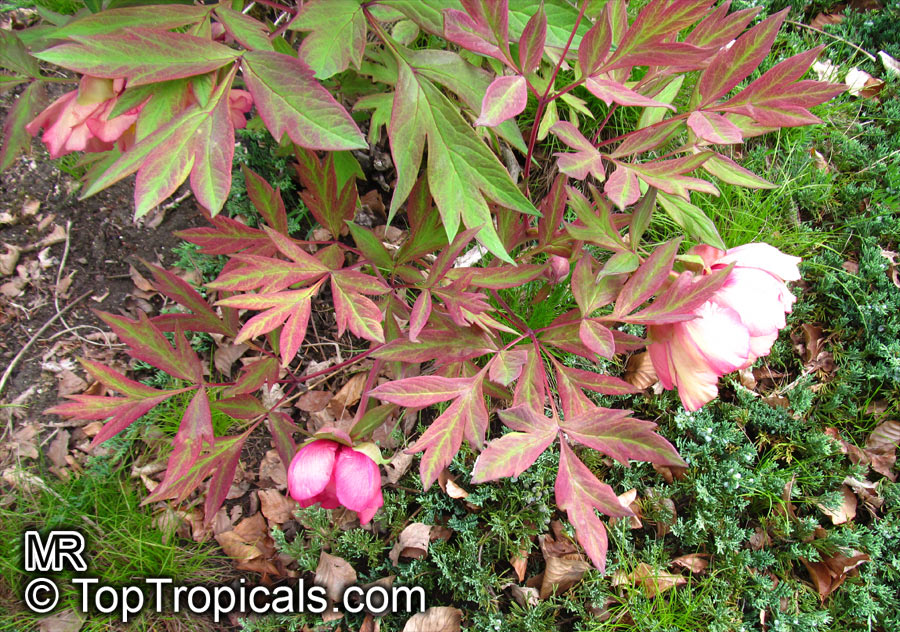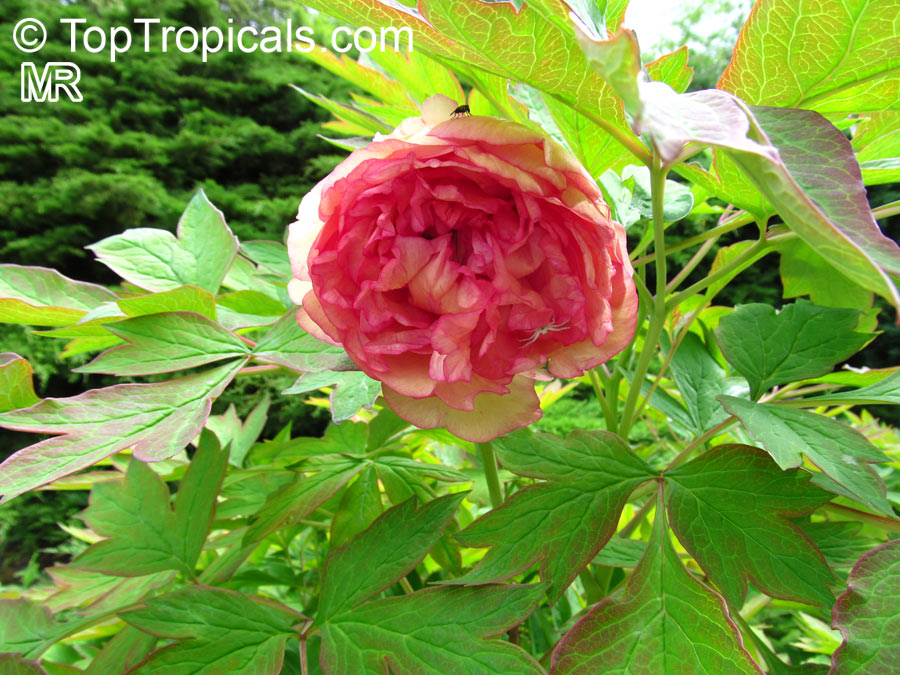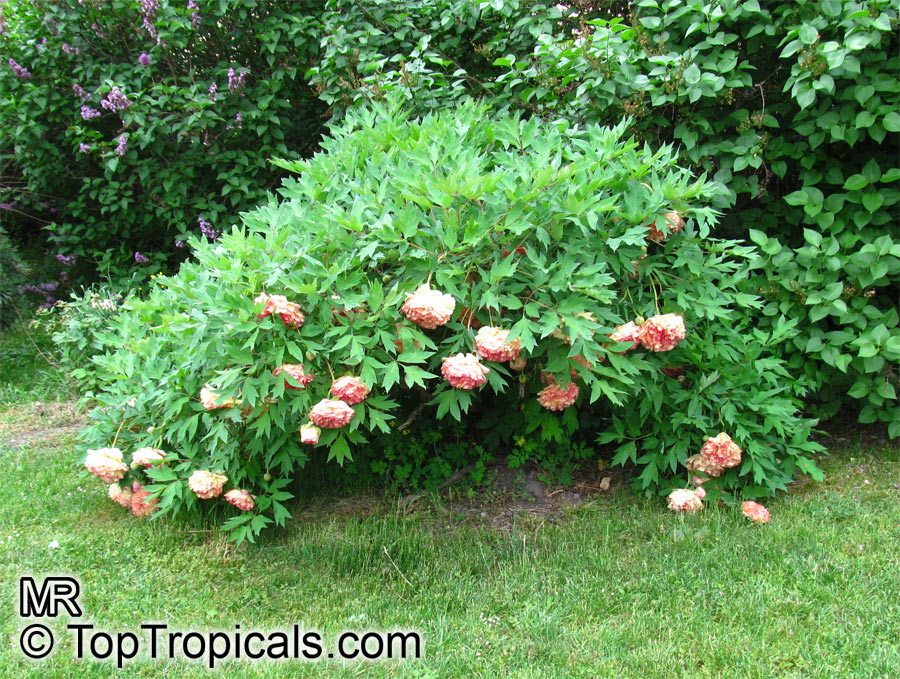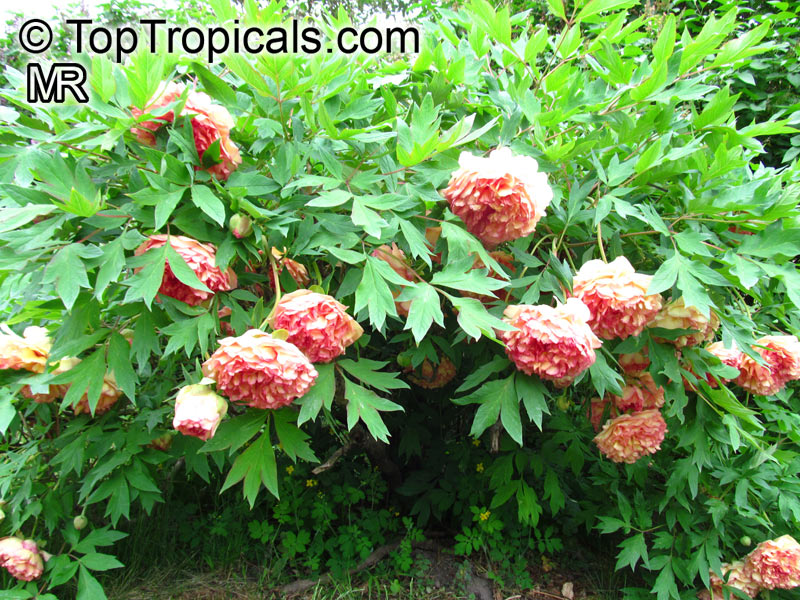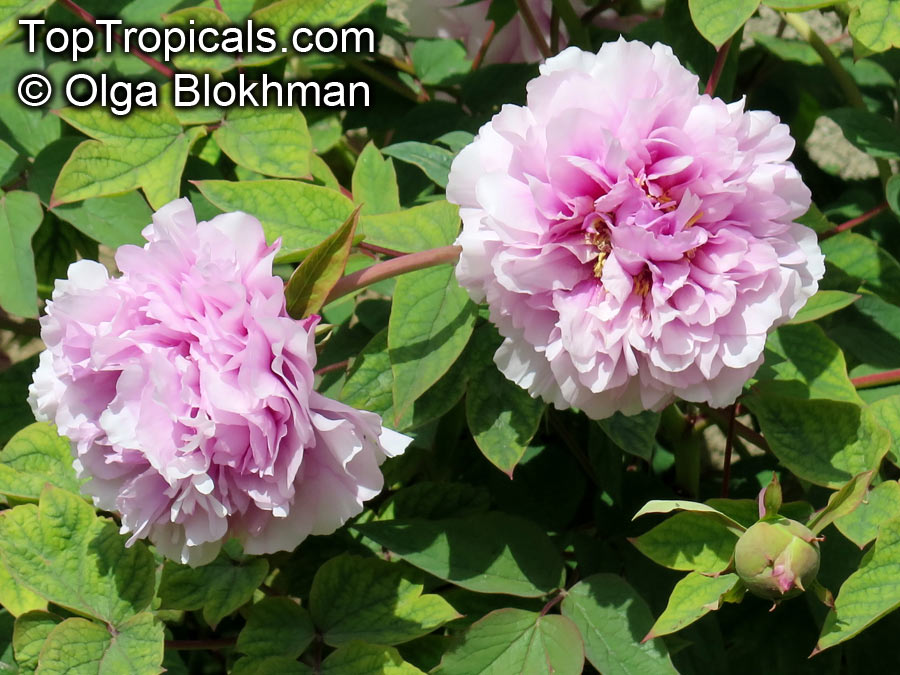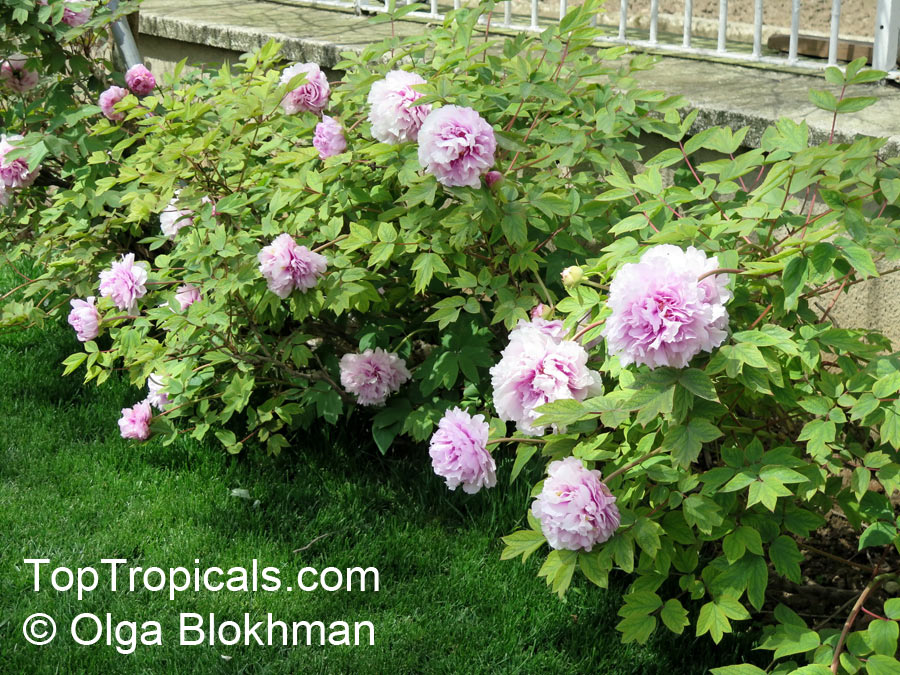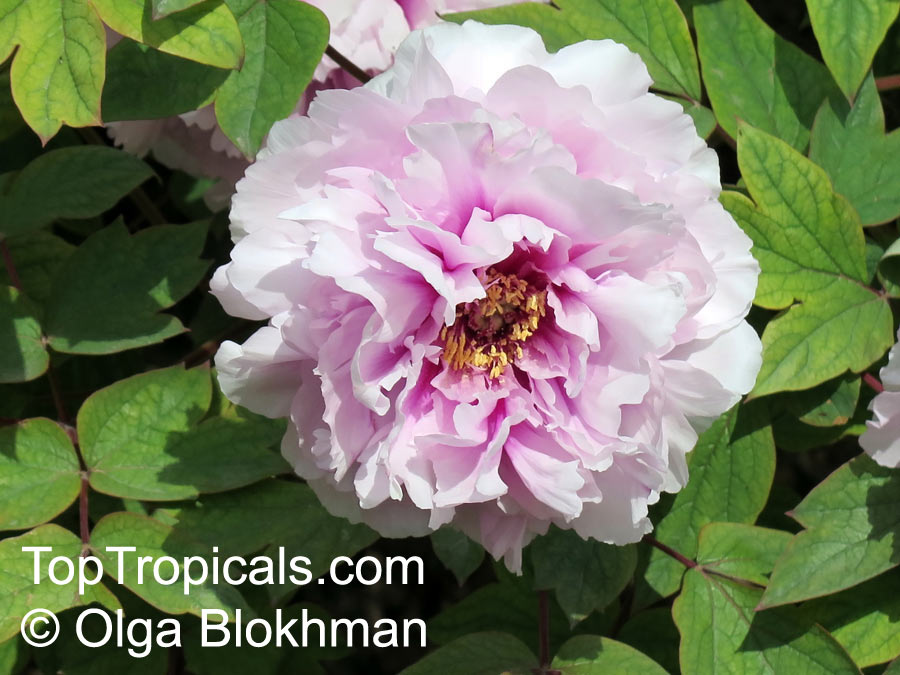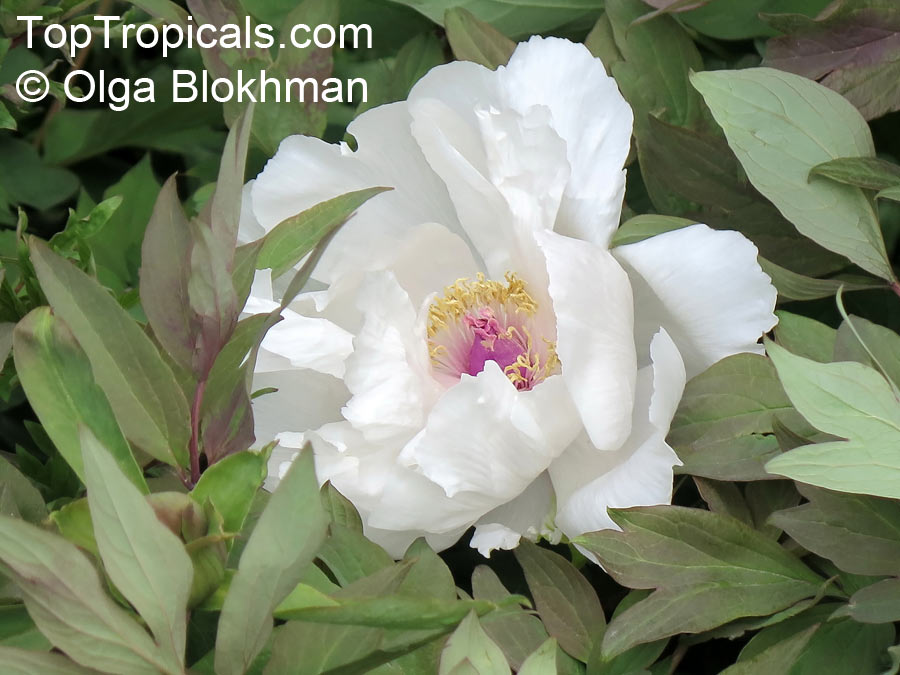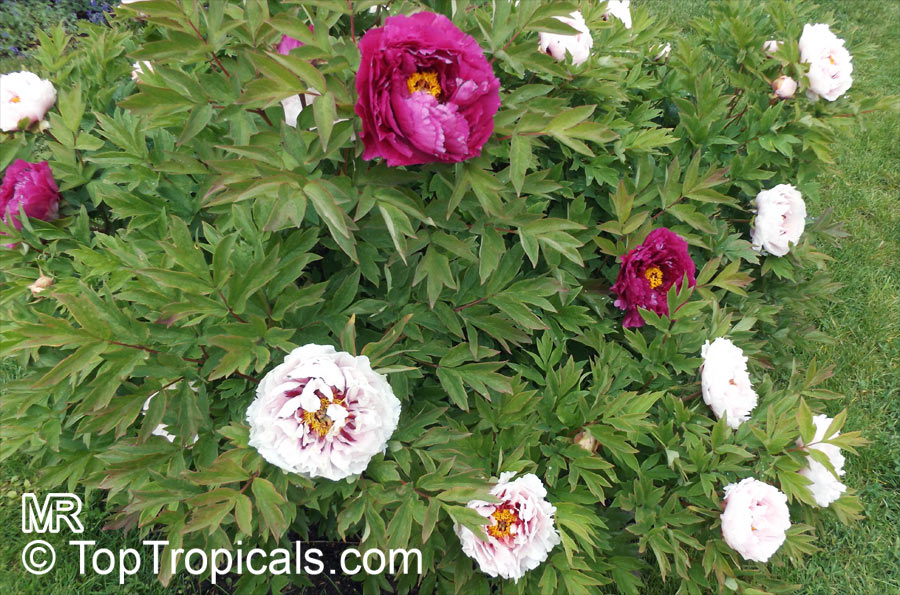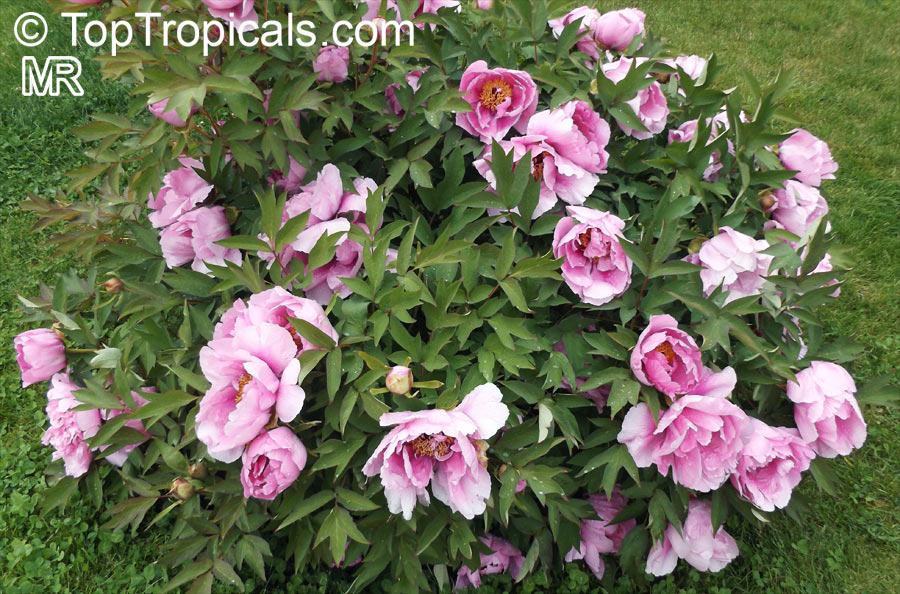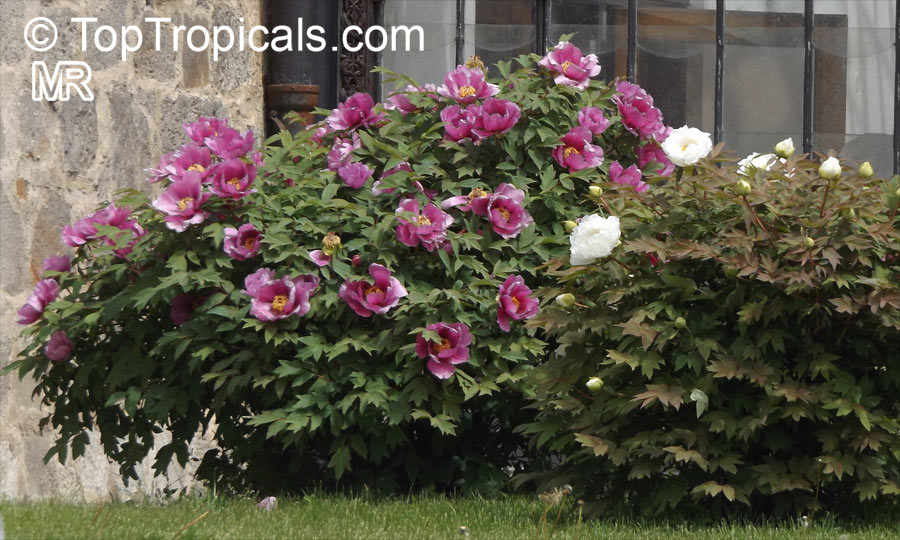Peony - Plant Encyclopedia Results
Top Tropicals Plant Encyclopedia
| Number of plants found: 5 |
Botanical names: Melastoma malabathricum, Melastoma polyanthum, Melastoma sanguineum
Common names: Pink Tibouchina, Straits Rhododendron, Chinese Wild Peony, Indian rhododendron, Lasiandra, Pink Glory Bush
Family: Melastomataceae
Origin: Tropical Asia







This small to large shrub is native to the tropical climates of Asia and can reach heights of 5-10 feet tall (2-5 feet for smaller shrubs). The plant flourishes in semi shade and prefers a moderate water supply, making it a great choice for gardeners with busy schedules. Its delicate beauty is visually stunning in summer and autumn months with the large clusters of pink flowers, while some cultivars also offer white and off-white flowers. Its ethnomedical qualities are used to treat poisoning and stop bleeding, making it an important addition to any medicinal garden.
When grown in the right environment, this plant is cold hardy and can survive temperatures as low as 30°F for a short time. For regions with cold winter months, it is best to grow Melastoma melabathricum in a pot instead of the ground. Providing proper protection from the elements is essential for protecting the shrub from potential damage. Covering the pot with an insulating material, like blankets or burlap, and keep it away from extreme temperature changes is a great way to ensure its longevity.
This plant is an excellent choice for any gardener that wants a showy bush with a wealth of ethnomedical properties. The beautiful pink flowers, the easy-to-follow upkeep, and the cold hardiness under the right conditions make Melastoma melabathricum a great addition to any garden.
Botanical name: Paeonia delavayi
Common name: Delavay's Tree Peony
Family: Paeoniaceae
Origin: China









Paeonia delavayi mostly has red brown to yellow, nodding flowers.
Paeonia delavayi is variable in the number and shape of the leaflets and in the number, size, and color of all parts of the flower both within and between populations. Paeonia lutea, P. potaninii, and P. trollioides are all regarded as synonyms of P. delavayi. P. lutea var. ludlowii was shown to differ in a number of characters and is now named Paeonia ludlowii.
Botanical names: Paeonia ludlowii, Paeonia lutea var. ludlowii
Common name: Tibetan Tree Peony
Family: Paeoniaceae
Origin: Tibet









Paeonia ludlowii, is a medium high, deciduous shrub, that is endemic to South-East Tibet. This forms a large woody shrub in time, with interesting tan-colored stems. Large saucer-shaped blooms appear in late spring, in a beautiful clear yellow with deeper golden stamens.
Botanical name: Paeonia rockii
Common names: Rock's Peony, Tree Peony
Family: Paeoniaceae
Origin: China









The flowers are mostly white or light pink with dark maroon basal flares on the petals.
Botanical name: Paeonia suffruticosa
Common name: Tree Peony
Family: Paeoniaceae
Origin: China










The unique foliage of Paeonia suffruticosa is leathery and gray-green, forming a mound of foliage which generally turns yellow in fall. The plant is fragrant with a sweet, pleasant scent and prefers semi-shade and regular water, often reaching maturity in 4-5 years if healthy.
Pruning of the Paeonia suffruticosa can begin in late fall or early winter, although flowering may be reduced in the first few years. When pruning, the basal growth should remain untouched and any dead or diseased material should be removed.
Care of the Paeonia suffruticosa is dependent on your climate. It is hardy to USDA zones 5-9. In warmer regions, the plant is quite hardy and can survive with minimal water and protection, while in colder climates it will require more attention. In cold areas it is best to grow the plant in a pot and bring it indoors during the winter. potted plants should be placed in a bright, cool spot and watered regularly. If possible, the pot should be positioned so that it is sheltered from extreme conditions like wind and sun. The soil should also be well-draining, as the roots of the Paeonia suffruticosa can rot in overly damp soil.
Overall, Paeonia suffruticosa is an attractive and rewarding plant to grow, offering a wide range of flower forms and fragrances. With regular pruning and plenty of sun and water, it can provide many years of enjoyment for your garden.
Use link to repeat this search:
https://toptropicals.com/cgi-bin/garden_catalog/cat.cgi?find=Peony&search_op=and&keyword_op=and&language=e&number=10
&no_change_lang=1&user=tt&sale=1&first=0
